Best 5K and 8K monitor of 2025
We tested the best 5K and 8K monitors for ultra-high resolutions and ultra-sharp picture quality
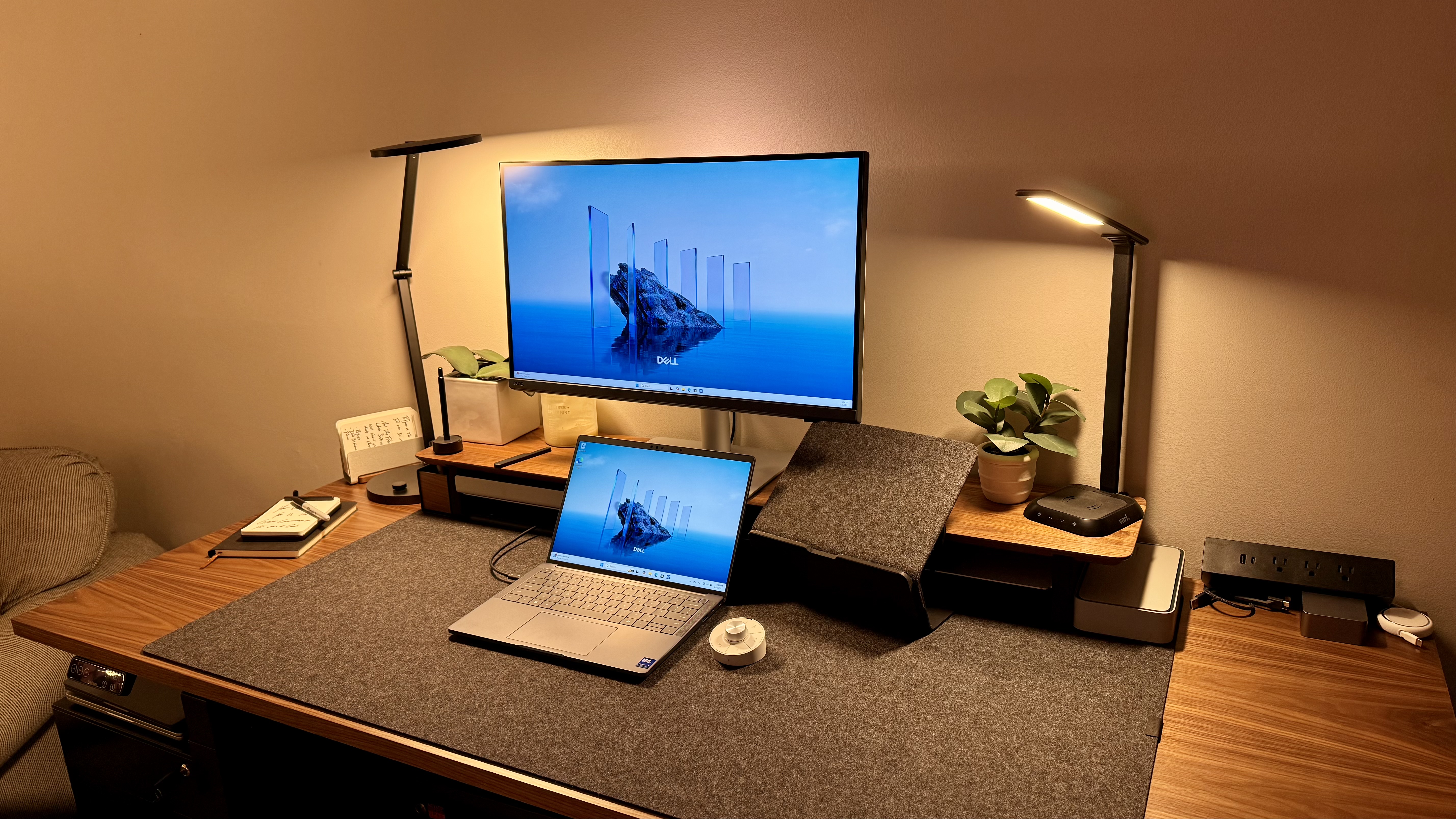
If you're a designer, developer, or hardcore gamer, the best 5K and 8K monitor is going to elevate your whole experience. My team and I comprehensively tested every 5K monitor and 8K monitor featured in this round-up - and these are my top-rated picks.
The Dell UltraSharp U4924DW is the best 5K monitor around right now, while the best 8K monitor is the Dell UltraSharp UP3218K. Under review conditions, both displays delivered exceptional image quality and an immersive experience throughout use. But it's not just Dell creating good 5K and 8K displays, and I've loaded up this guide with some excellent alternatives for every budget and user.
For some top lower-resolution screens, we've also tested out the best business monitors and best 4K monitors.
The quick list
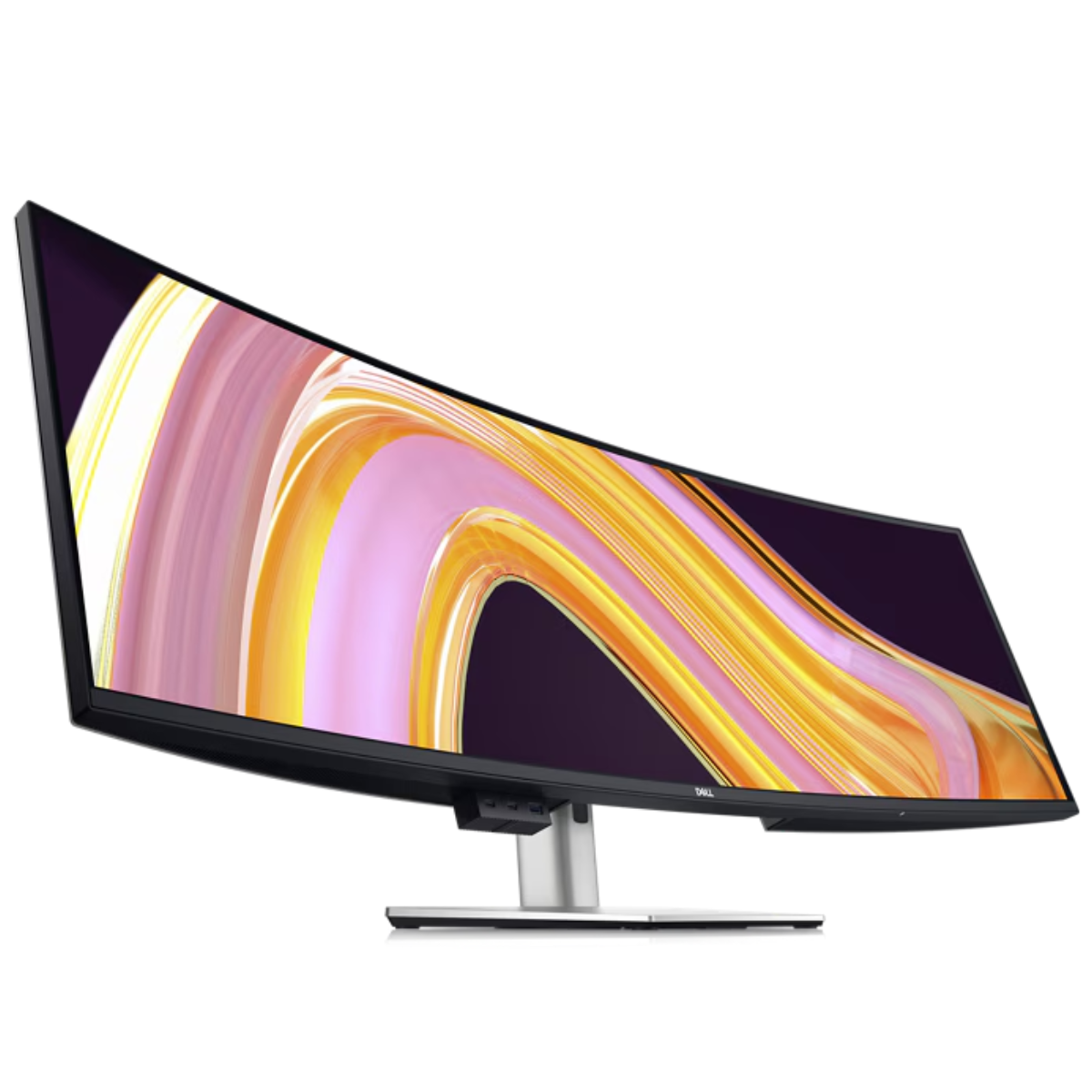
Best 5K monitor overall
Our pro pick is the Dell UltraSharp U4924DW, which boasts a massive 49in display with 5120 x 1440 resolution.
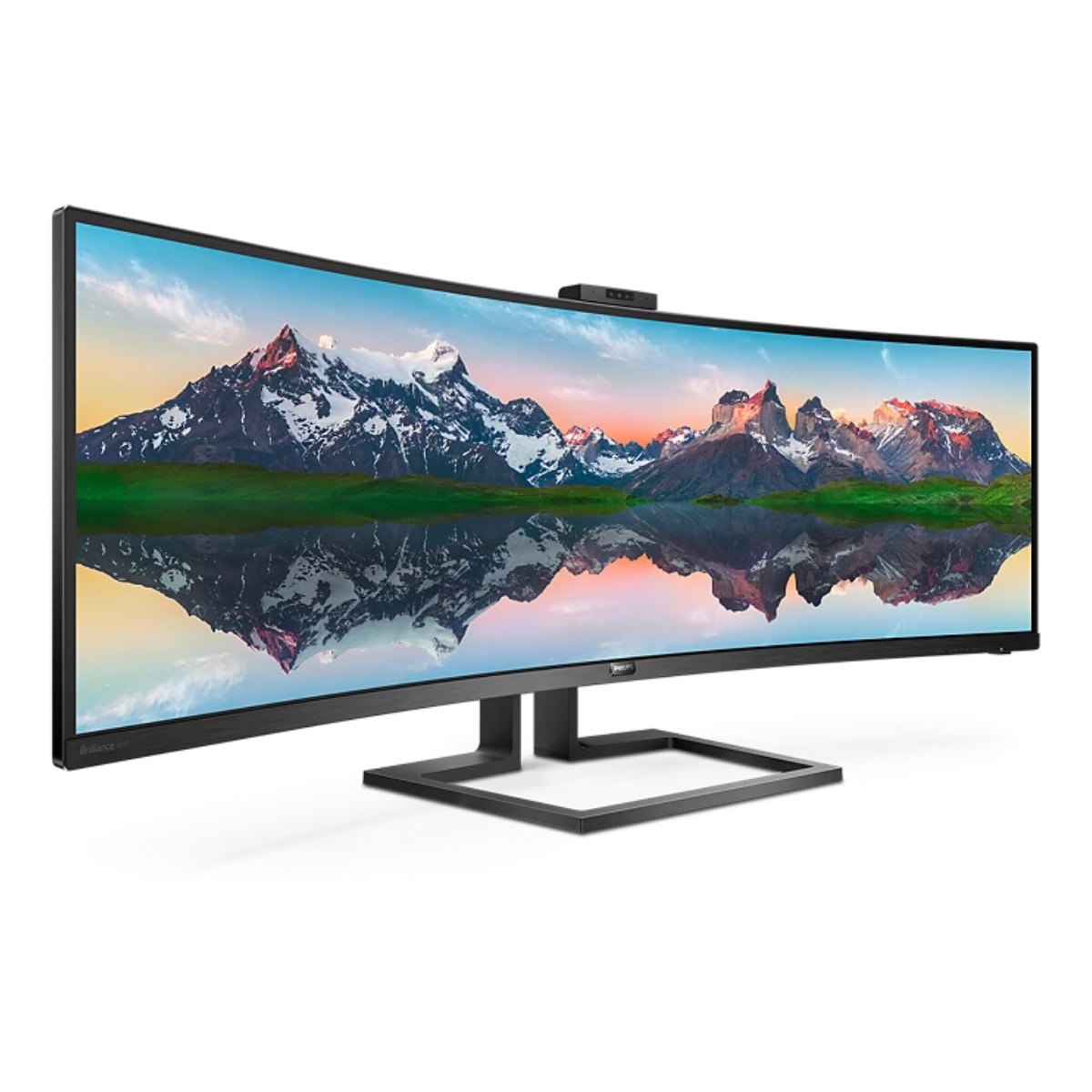
Best budget 5K monitor
A stunning screen with a crisp, vibrant 5K resolution the Philips 499P9H is a 49in curved monitor that's older and slightly cheaper.
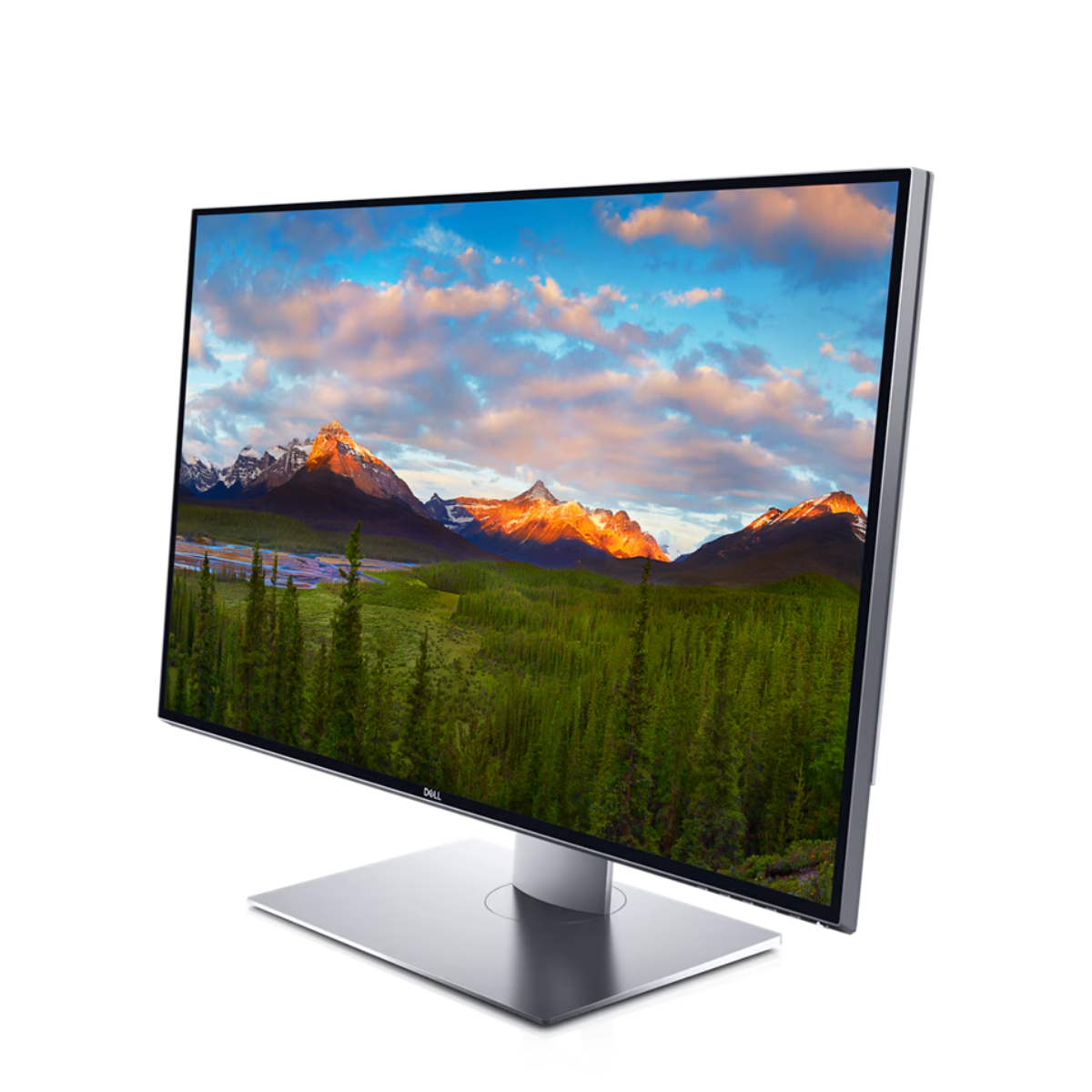
Best 8K monitor
We found the 8K resolution on this display to be simply jaw-dropping - incredible clarity from this 32in monitor.
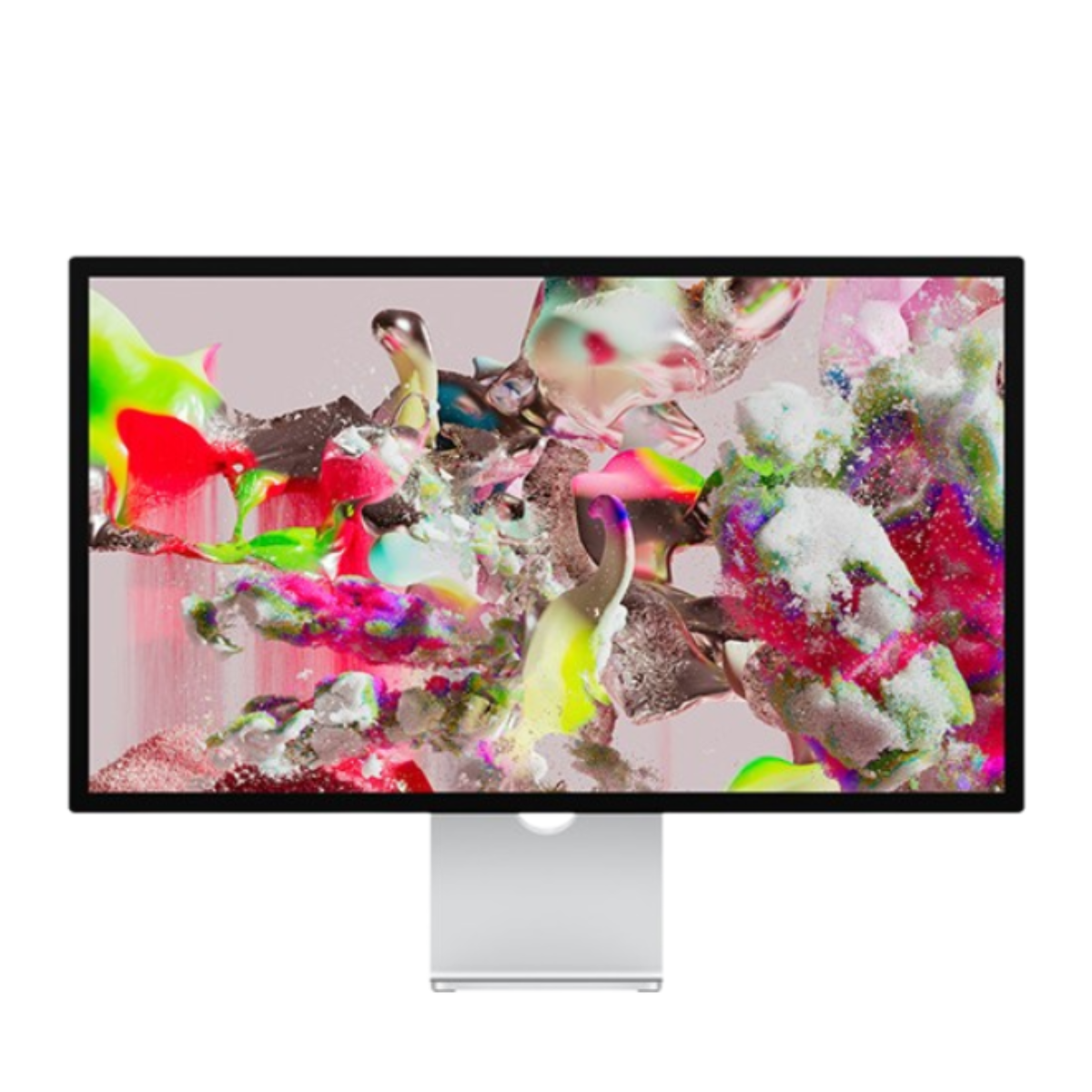
Best 5K monitor for Mac
If you're part of the Apple ecosystem, the Studio Display is a good, but not great addition with ultra high resolutions.
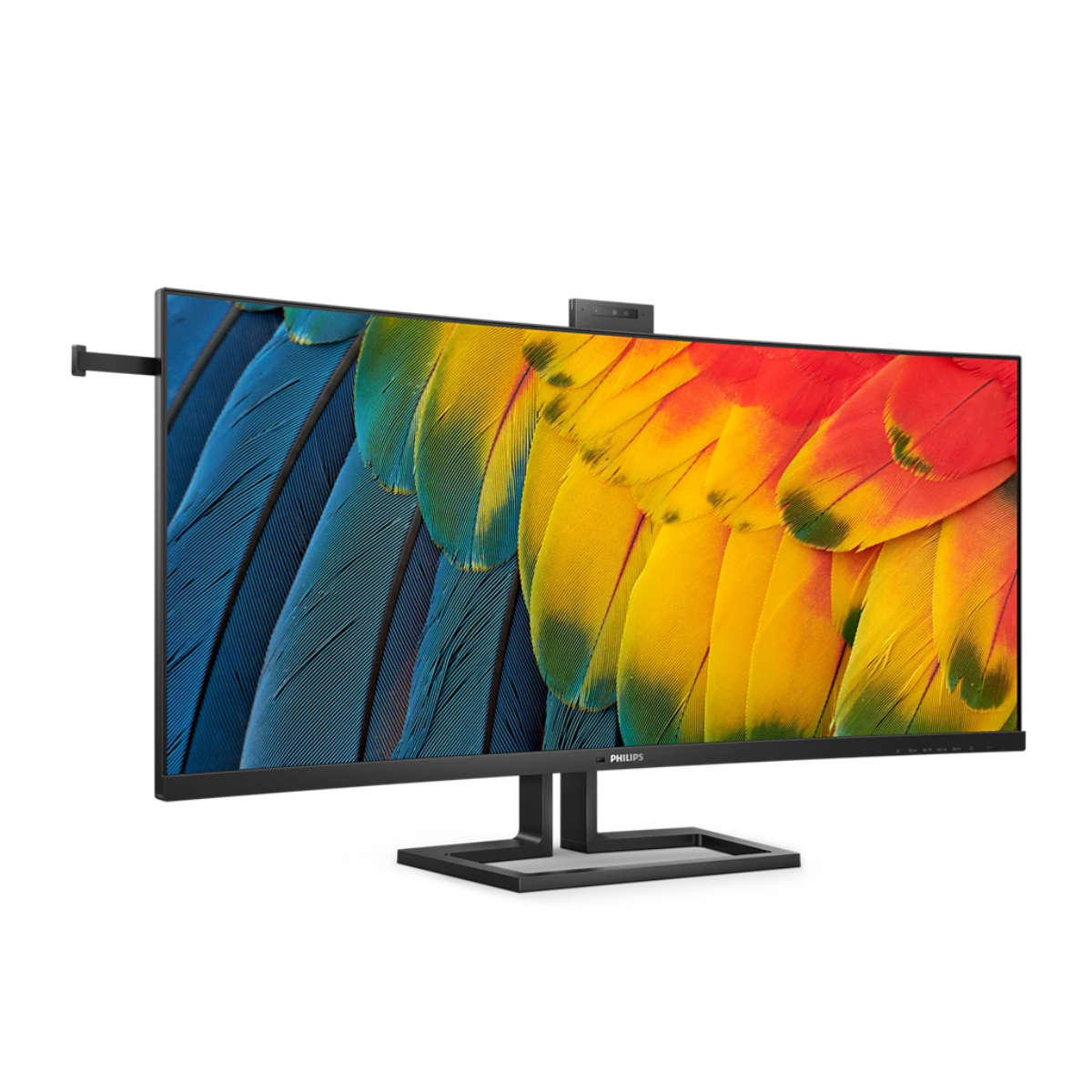
Best 5K business monitor
The Philips 40B1U6903CH proved to be professionally built and designed for productivity at stunning 5K definition.
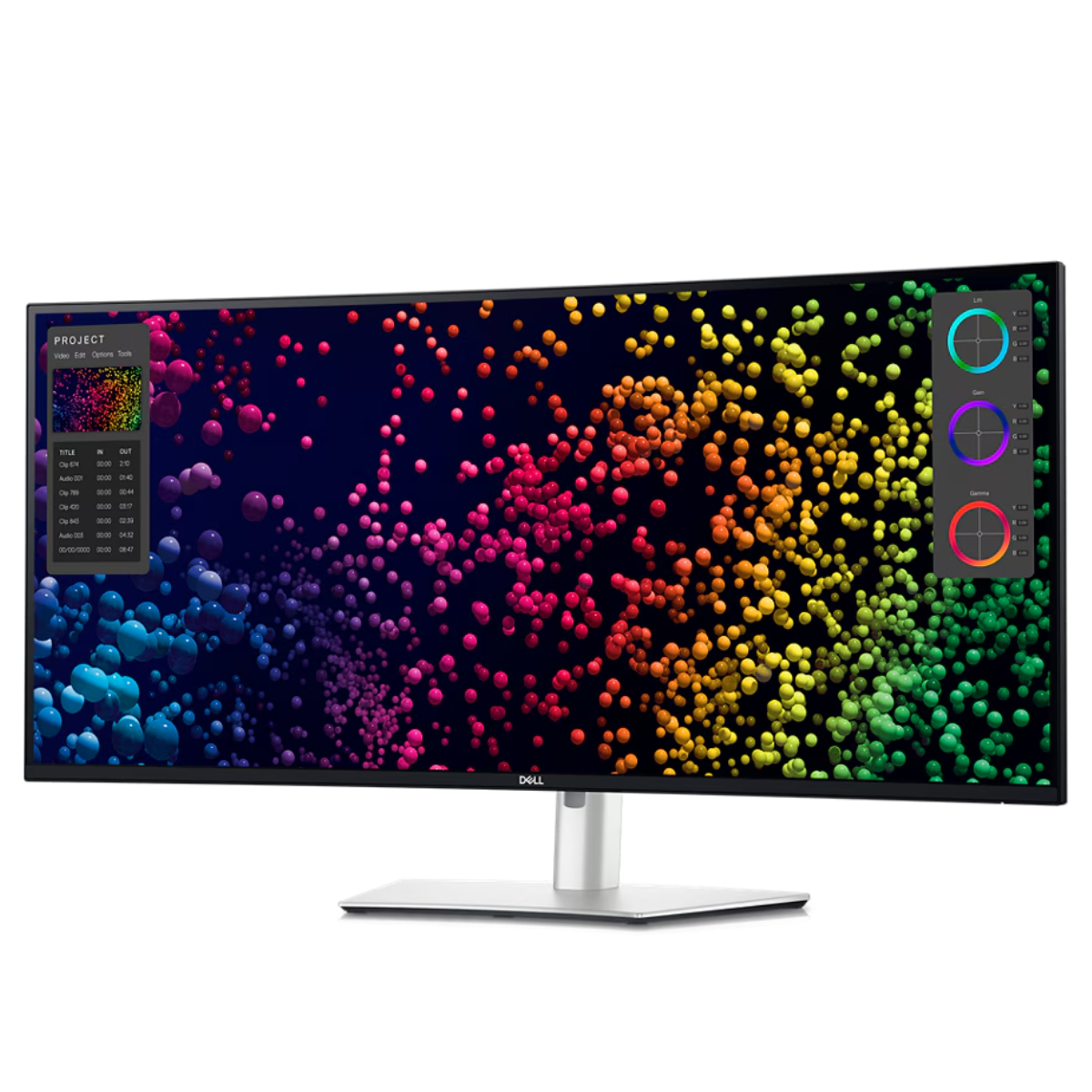
Best 5K ultrawide monitor
Professional and practical in design, Dell's UltraSharp U4025QW is a beast for performance and productivity.
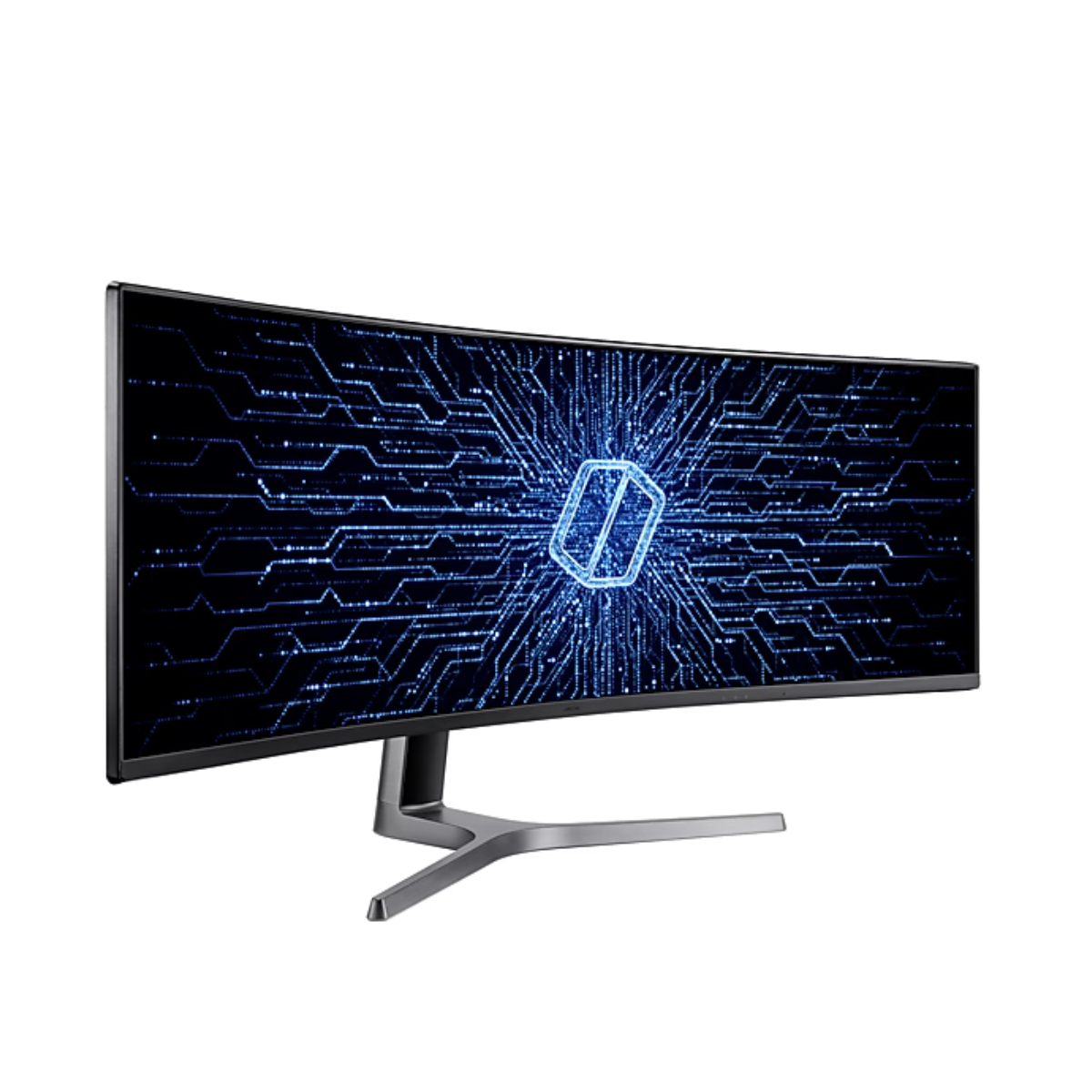
Best 5K monitor for gaming
A 49in beast of a screen, the Samsung Odyssey CRG9 is designed with gamers in mind, featuring high refresh rates and response times.
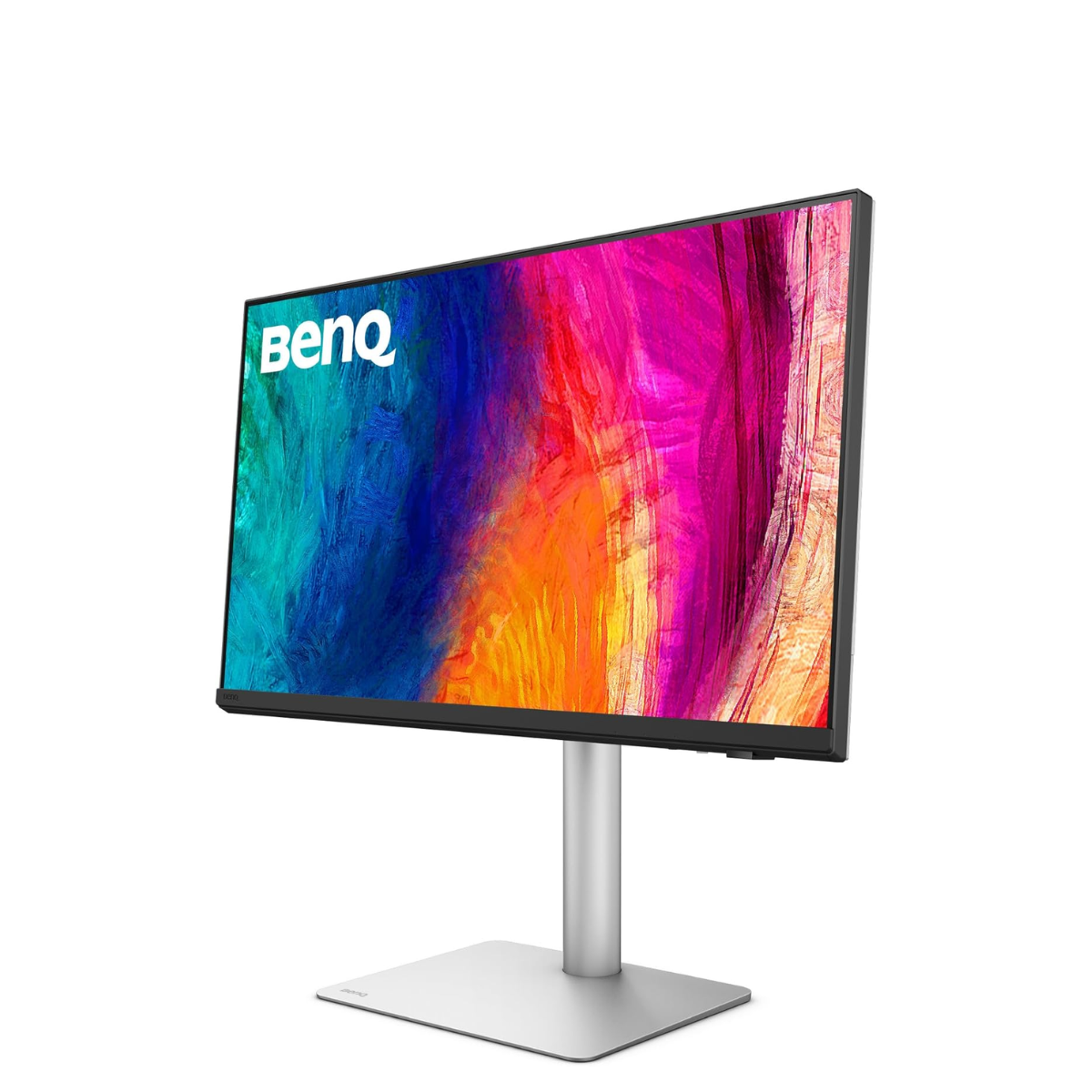
Best 5K monitor for creatives
We like the design and color accuracy on display here - a good Studio Display alternative that's cheaper, has more ports, and works across Windows and macOS.
Best 5K monitor overall
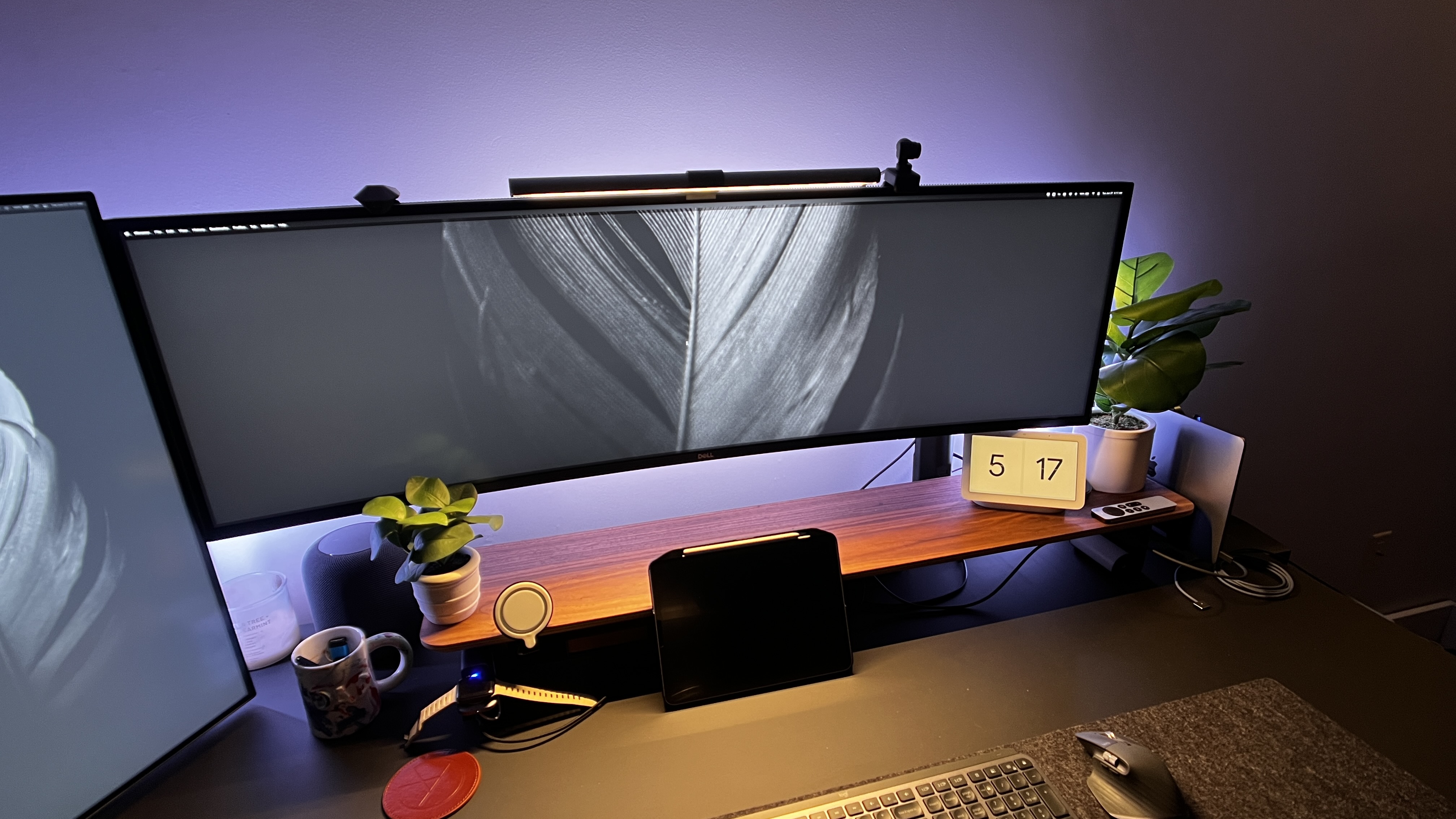
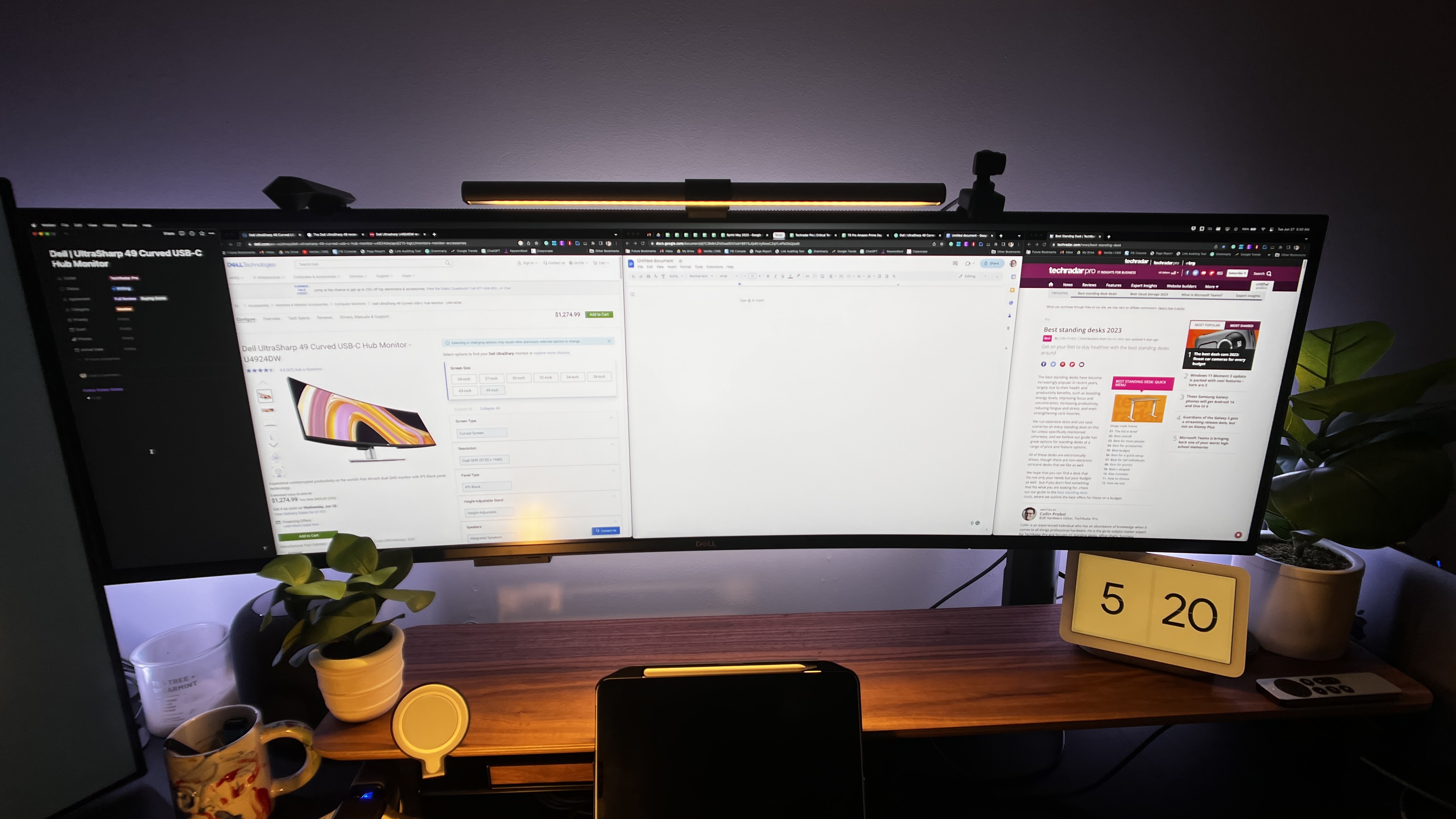
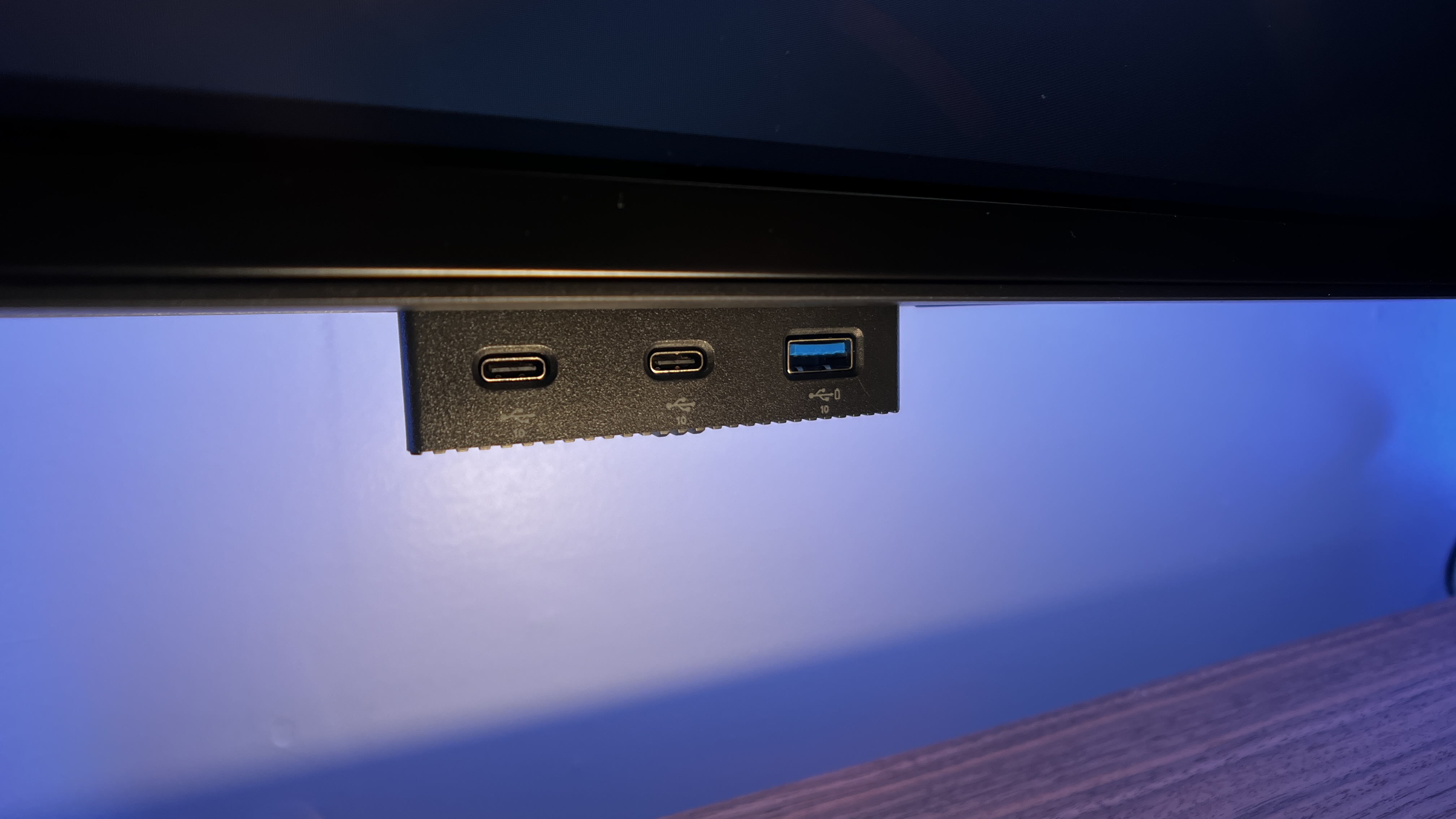
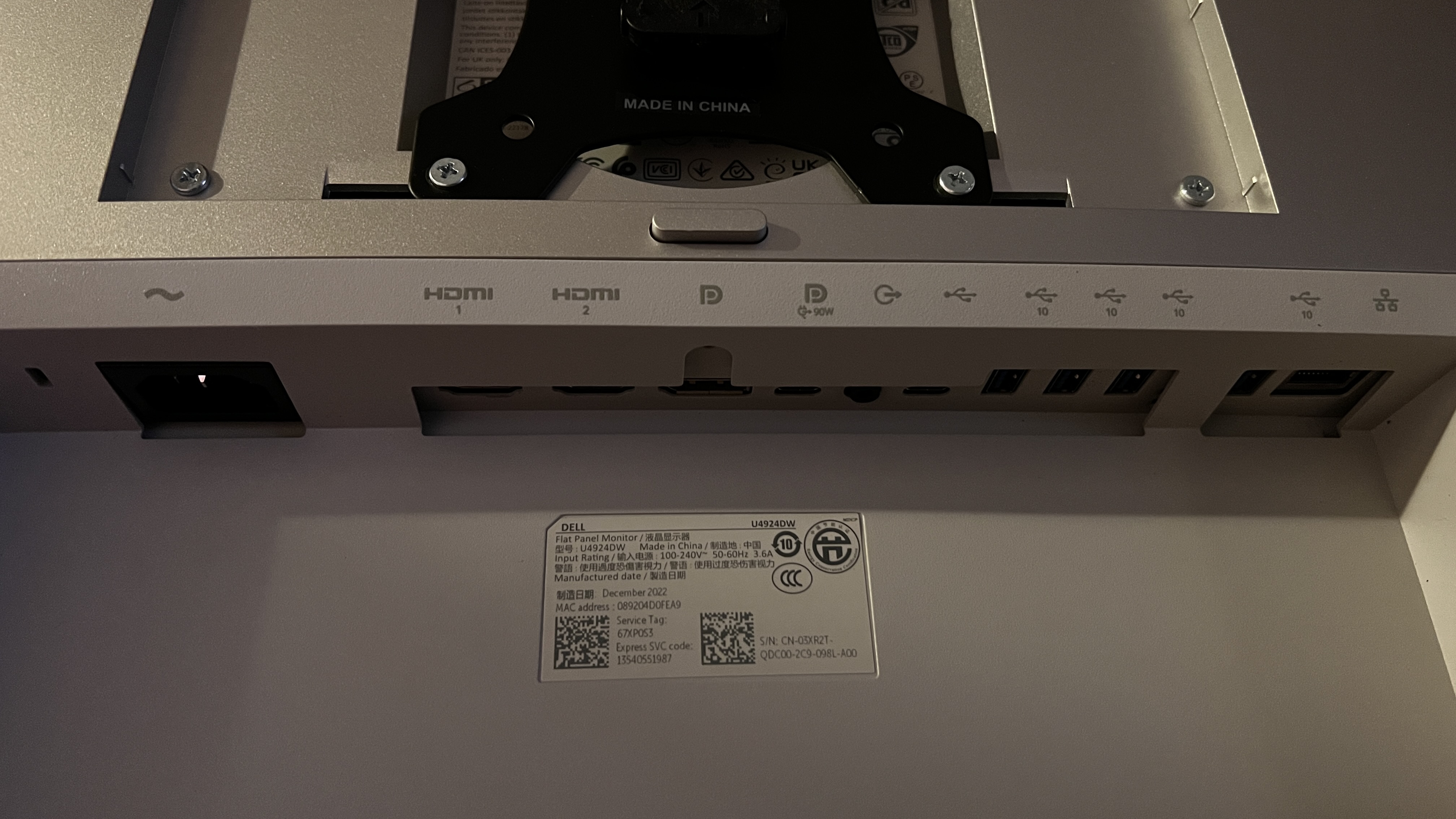
Specifications
Reasons to buy
Reasons to avoid
The Dell UltraSharp U4924DW is the best 5K monitor for most uses - with a massive 49in curved display and stunning ultra high-resolution.
In use, we found using this monitor to be an immersive experience.
There's plenty of scope for productivity and multi-tasking, too. During our months' long review, we found the sheer size of the screen changed our working practices for the better. We no longer felt cramped, free to open all the windows we wanted. That, alone, is worth the admittedly high price of admission. Especially when you consider that it's not as curved as other models we've reviewed, and has a large, heavy footprint (you'll need plenty of sturdy desk space here).
But, then, you're getting a top 5K experience, and overall, we found it difficult to go back to our more traditional monitor for work after using this.
Read our full Dell UltraSharp U4924DW review
Best budget 5K monitor

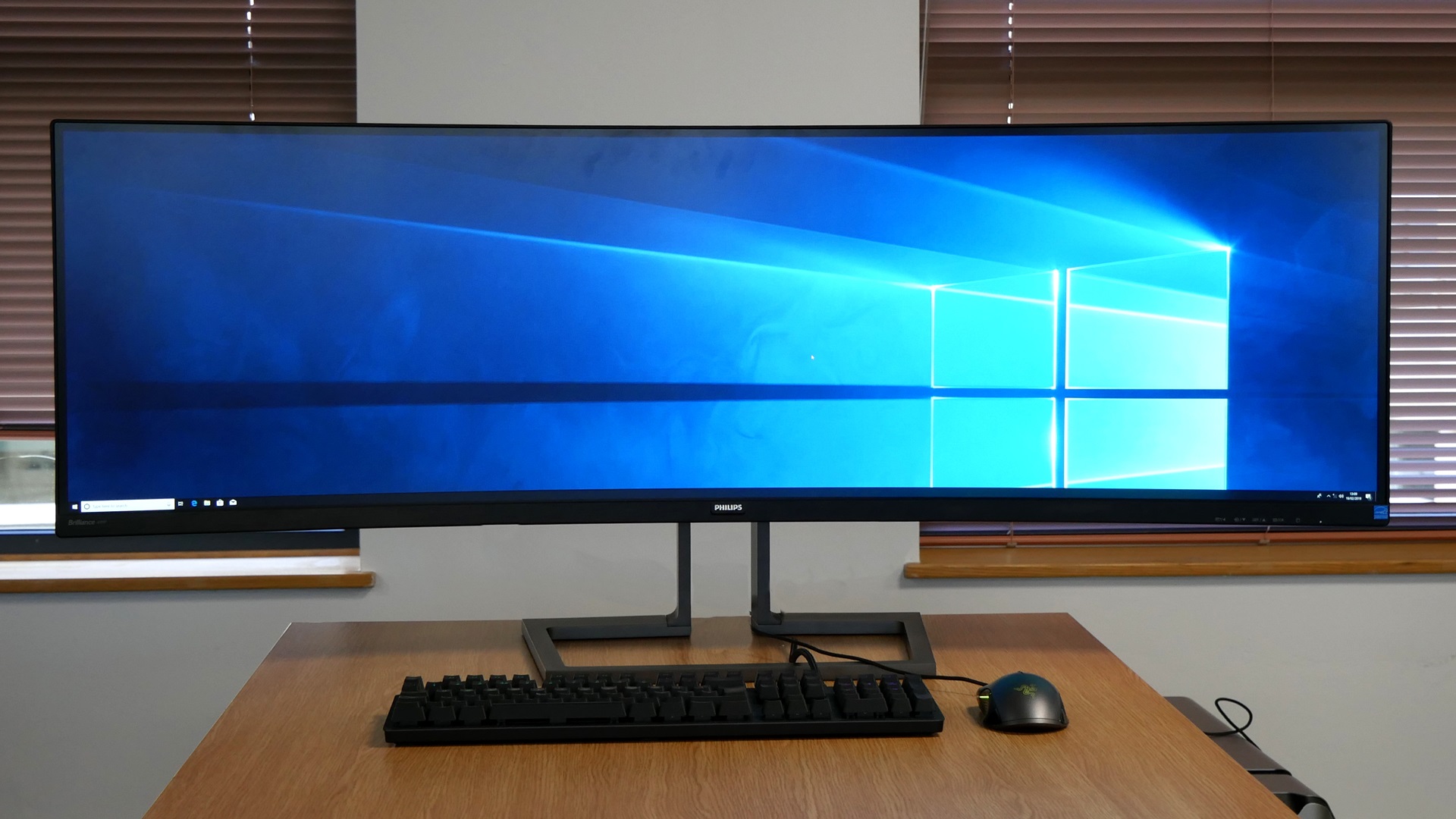
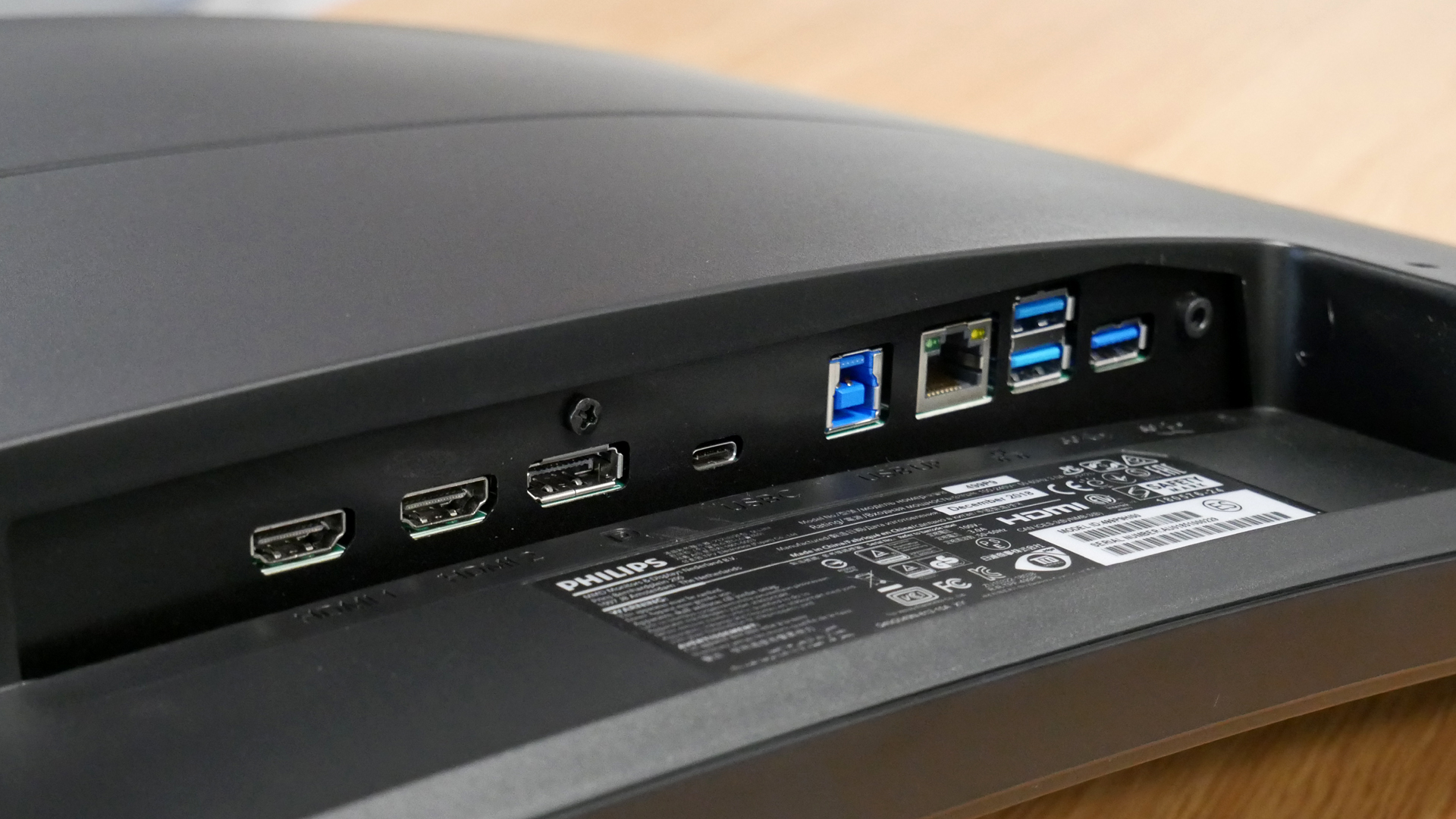
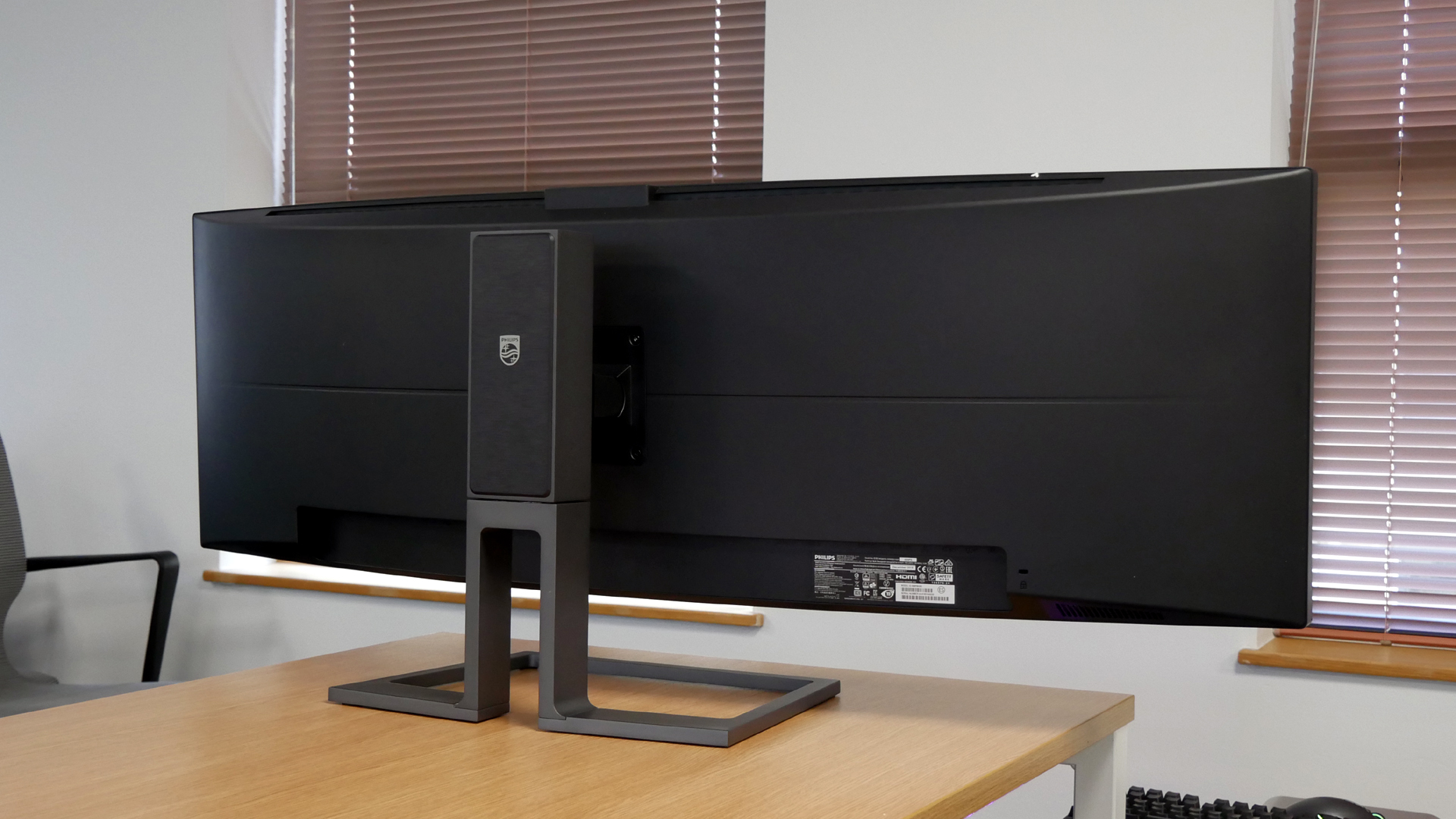
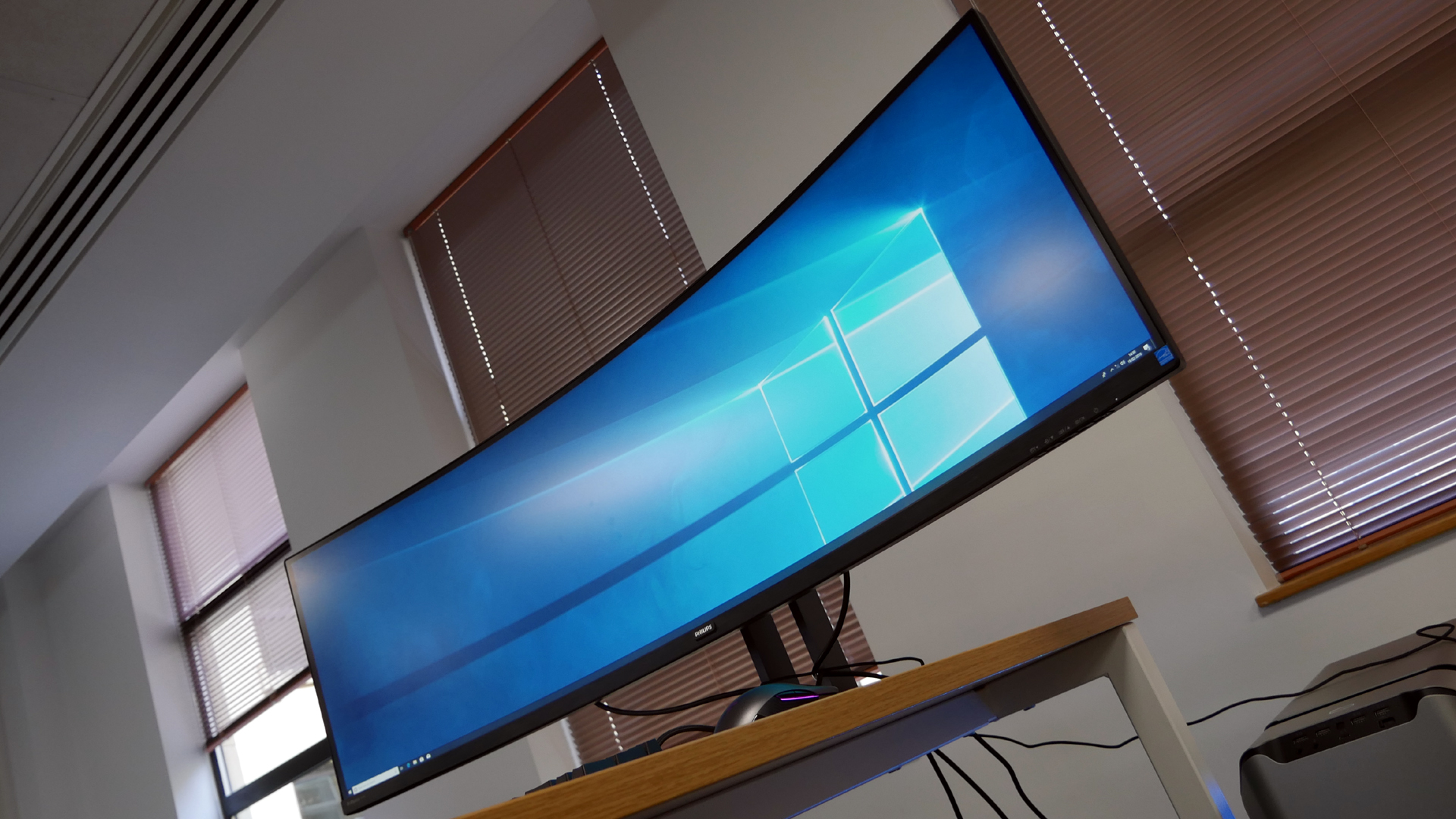
Specifications
Reasons to buy
Reasons to avoid
The impressive Philips 499P9H is one of the more feature-packed ultrawide monitors we've tested. It was, once, our pick for best 5K monitor overall, but has since been superseded by newer monitors. Ok, it may be an older model, but don't let that fool you. This is still an impressive hi-res display at under $1000 / £1000.
Its VA panel is 8-bit, rather than IPS and 10-bit, and only supports the DisplayHDR 400 standard - so while it looks fine to the untrained eye, it's less suited to professional photo and video-editing work than its rivals. That’s where our gripes end - this mammoth monitor features plenty of connectivity options, including a USB Type-C interface for hooking up a MacBook or other machine. In addition to the beautiful 32:9 aspect ratio, it goes further than rivals by including a pop-up webcam with Windows Hello Support for snappy face-ID login. The icing on the cake is its adaptive sync support, which makes it suitable for light gaming at 60fps if you have a capable AMD graphics card.
All around, this monitor is incredible to use, for productivity, this monitor is nearly too big and requires one of our largest desks in the studio to not look out of place. But once we found a good desk, this monitor made up for the work by allowing us to get so much done. We could have everything we needed and more on-screen without even thinking about adding a secondary screen or using our laptop in anything other than clamshell mode. This monitor has it all, and for productivity or creative work, this monitor is absolutely incredible.
Read our full Philips Brilliance 499P9H review
Get the best deal on Philips products with our Philips coupon codes.
Best 8K monitor
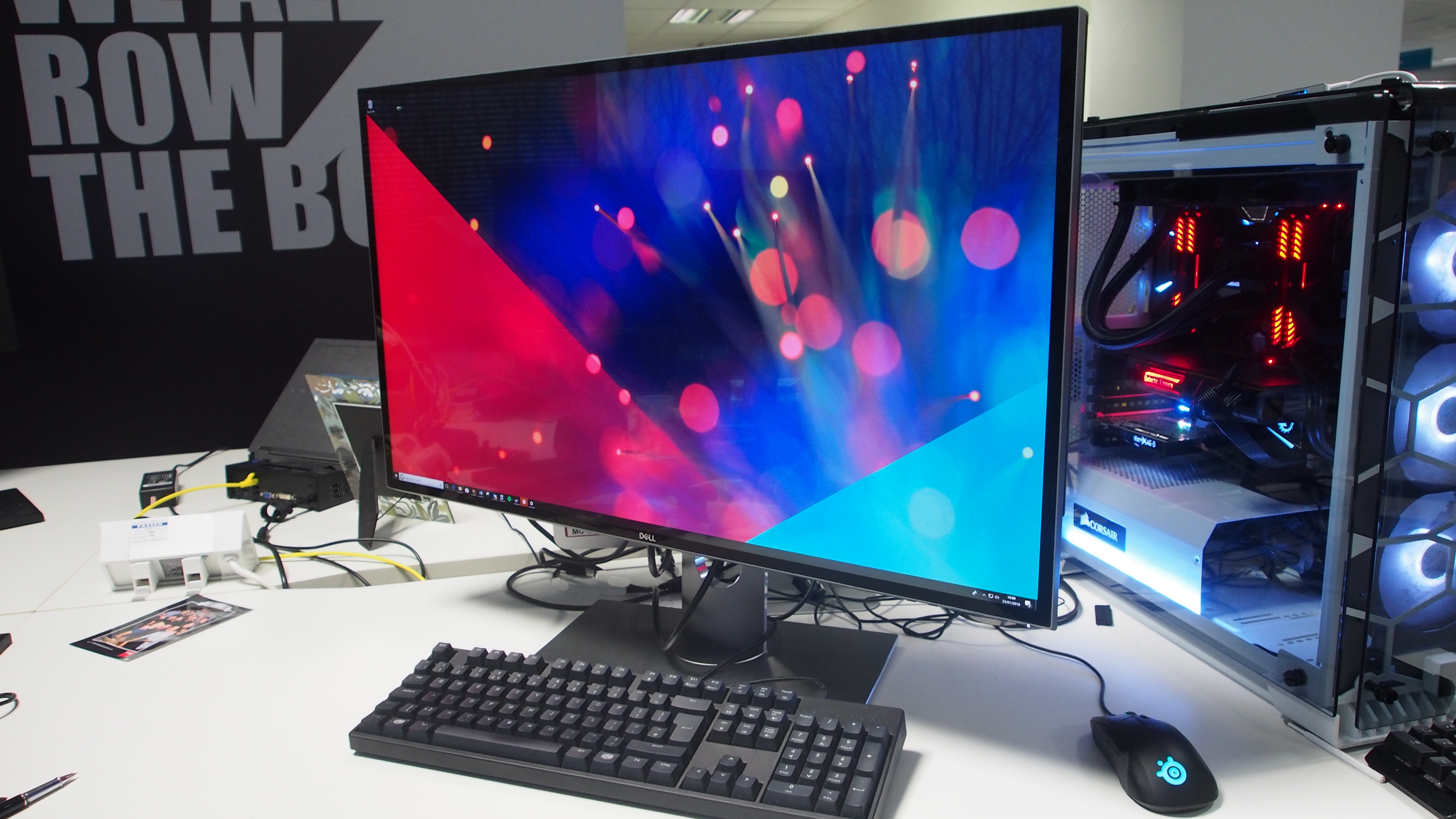
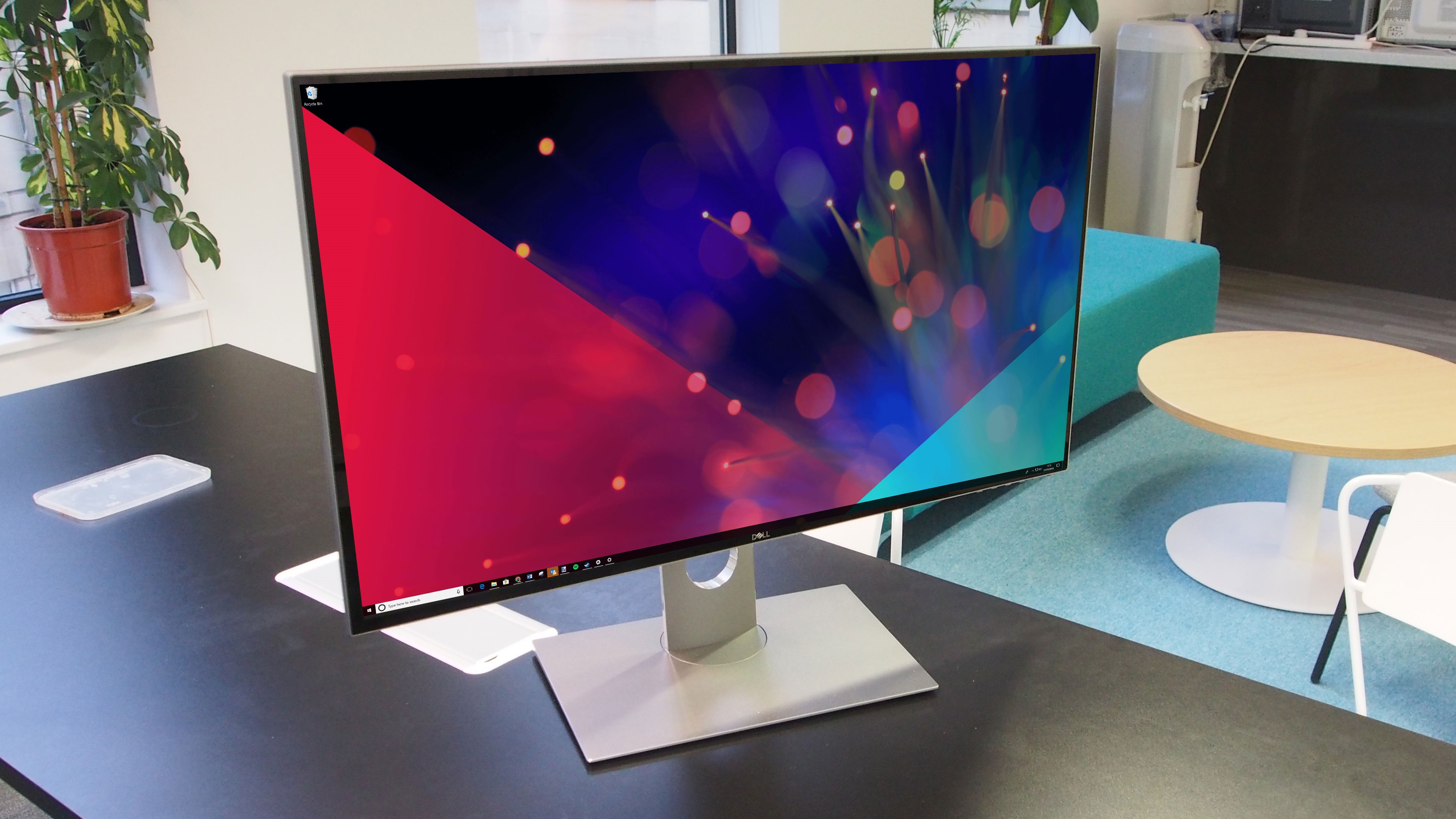
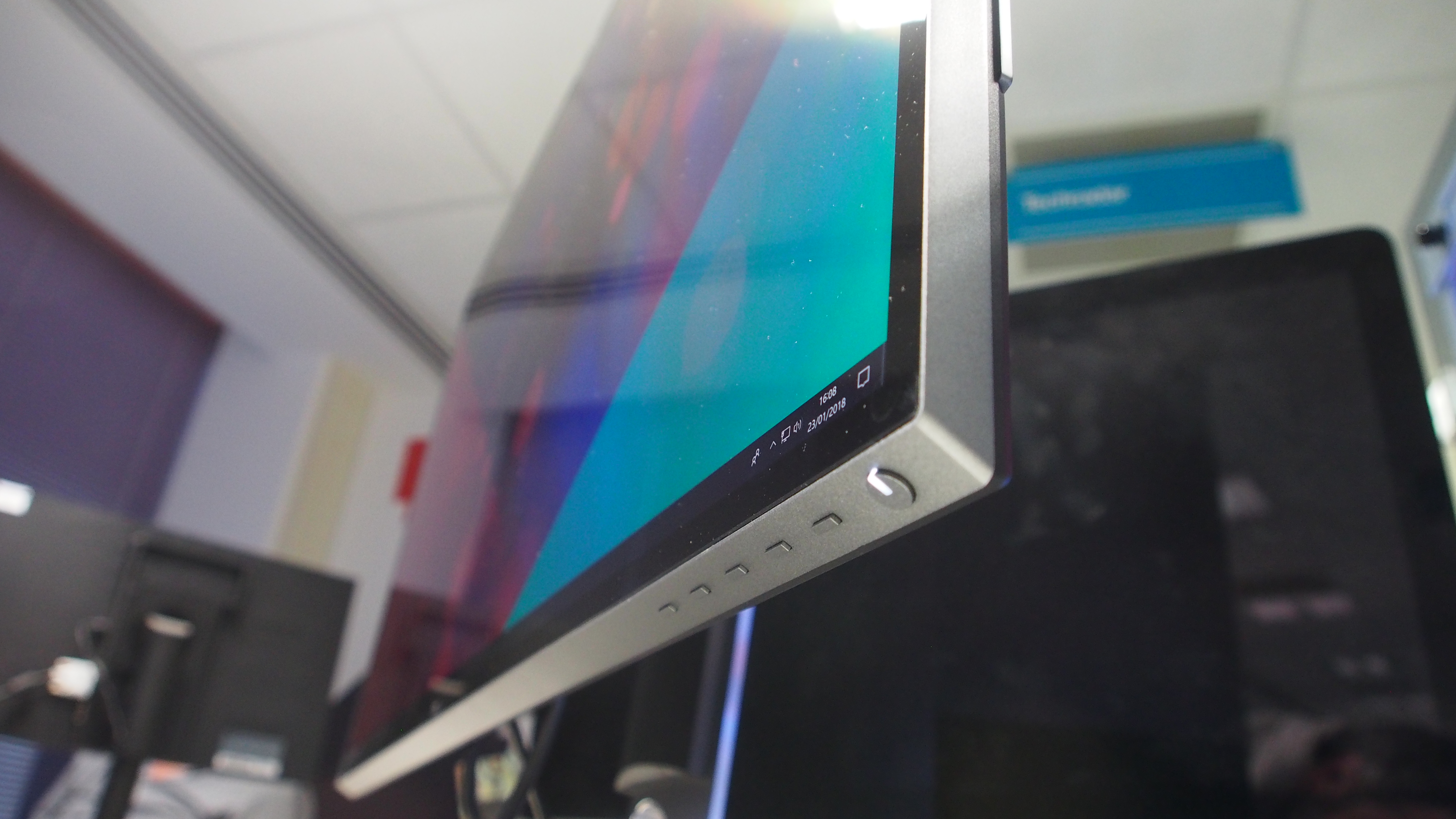
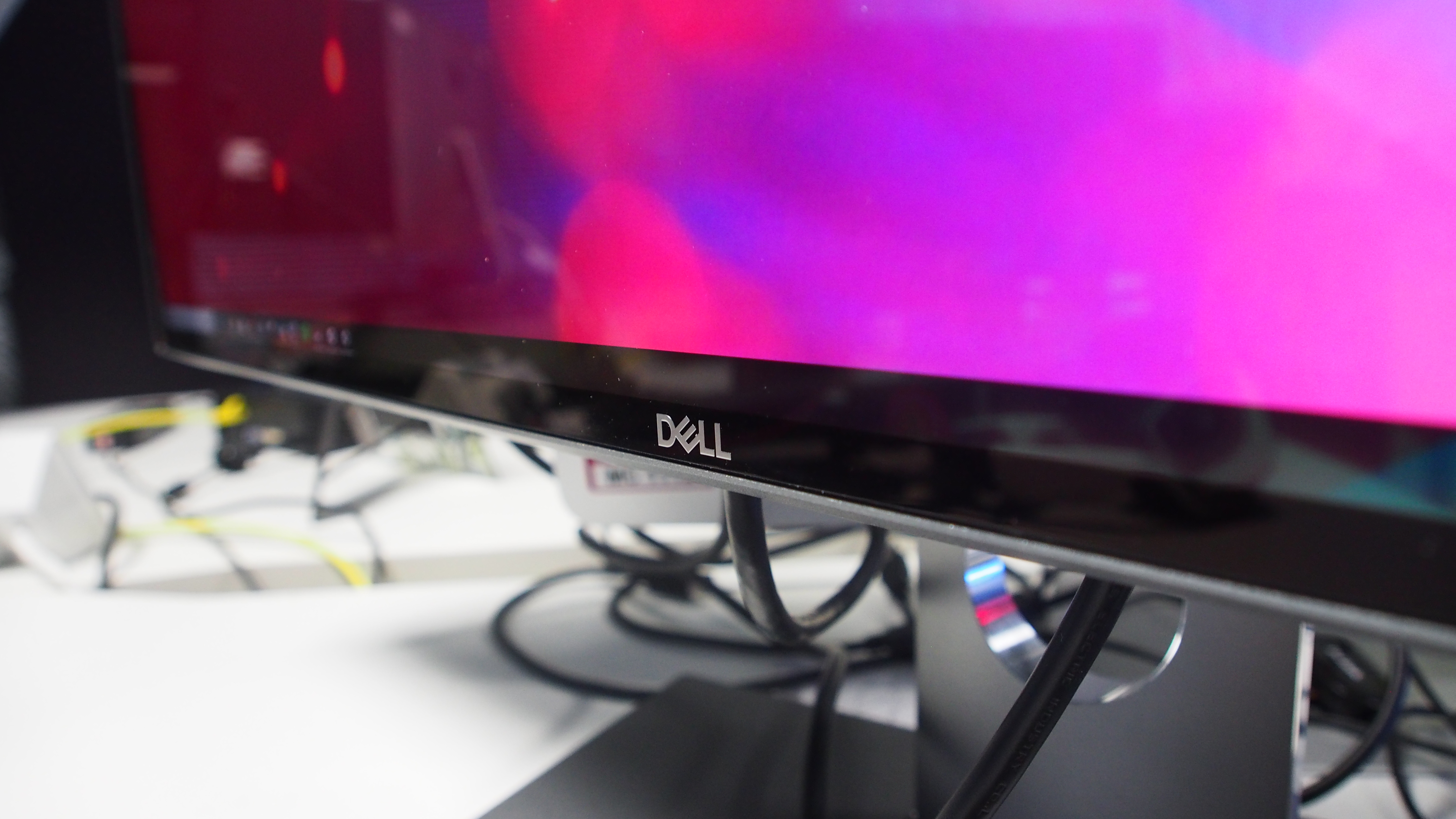
Specifications
Reasons to buy
Reasons to avoid
Two years after first clocking eyes on it, we're still drooling over the first 8K monitor to hit the shelves. The UP3218K justifies its cost in ways other than its sheer pixel count, which is so huge that finding content to take advantage of is no easy task. The monitor is adequately bright, features stellar build quality (surprisingly heavy), and its color reproduction is the best in the business. If you absolutely must have the sharpest screen that money can buy, this is it - but beware that it requires two DisplayPorts to run - so pairing it with a beefy GPU is a must.
Once we were able to get one of our higher-end PCs on this monitor, it became incredibly hard to want to use anything else. The clarity is absolutely astounding, there’s no other way to say it. Sadly, there is not a ton of 8K content out there, but when using 8K content on this 8K screen, it’s truly breath-taking. Granted, not everything has to be 8K to look amazing on this display, even 4K and 5K content looks great thanks to the amazing color accuracy and high brightness.
The one caveat we do need to mention one more time though, is that it takes a beast of a machine to run this monitor, so if you are interested in this display, make sure your computer of choice can output what is necessary to make this gorgeous monitor worth it.
Read our full Dell UltraSharp UP3218K 8K monitor review
Best 5K monitor for Mac
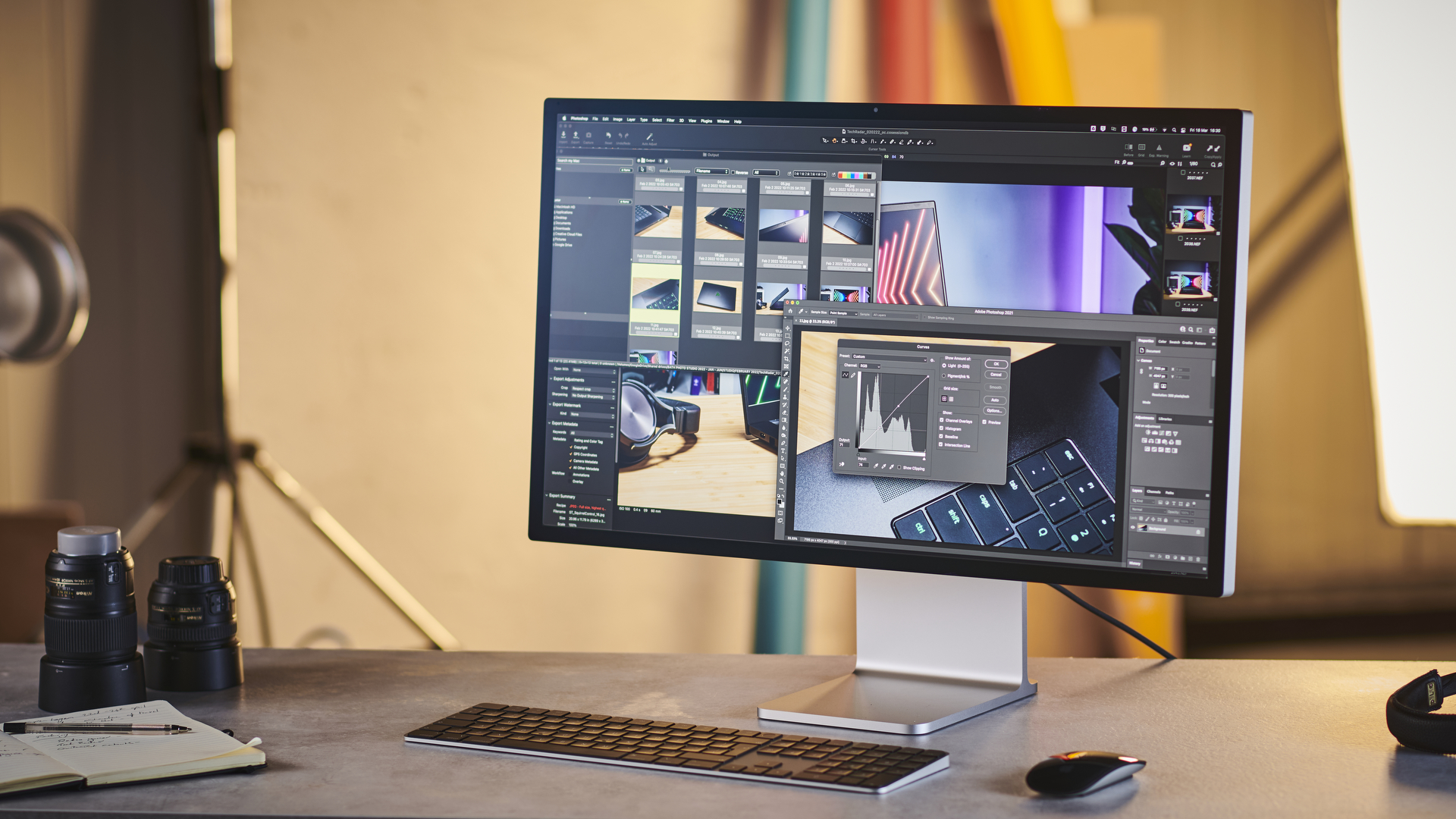
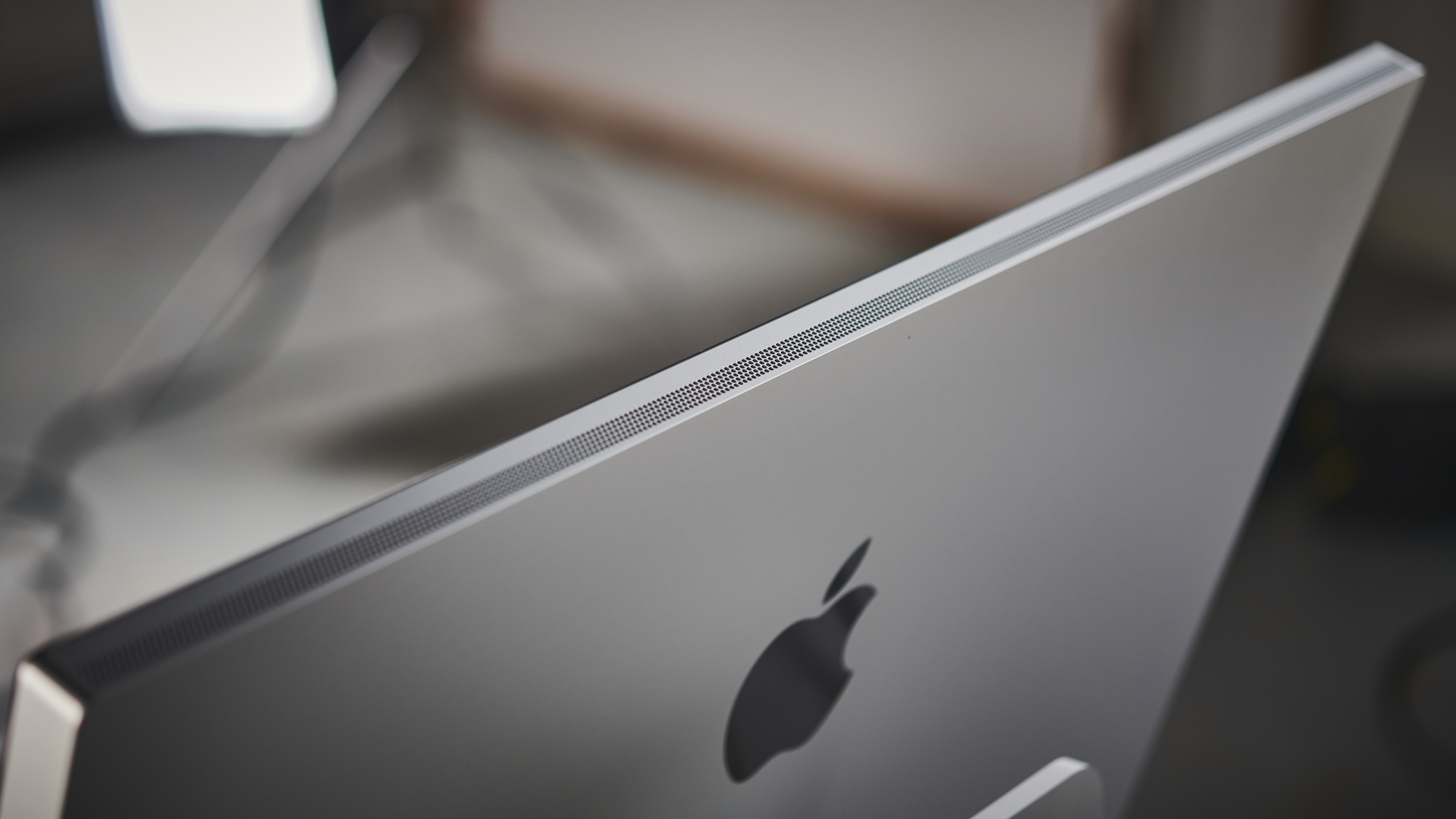
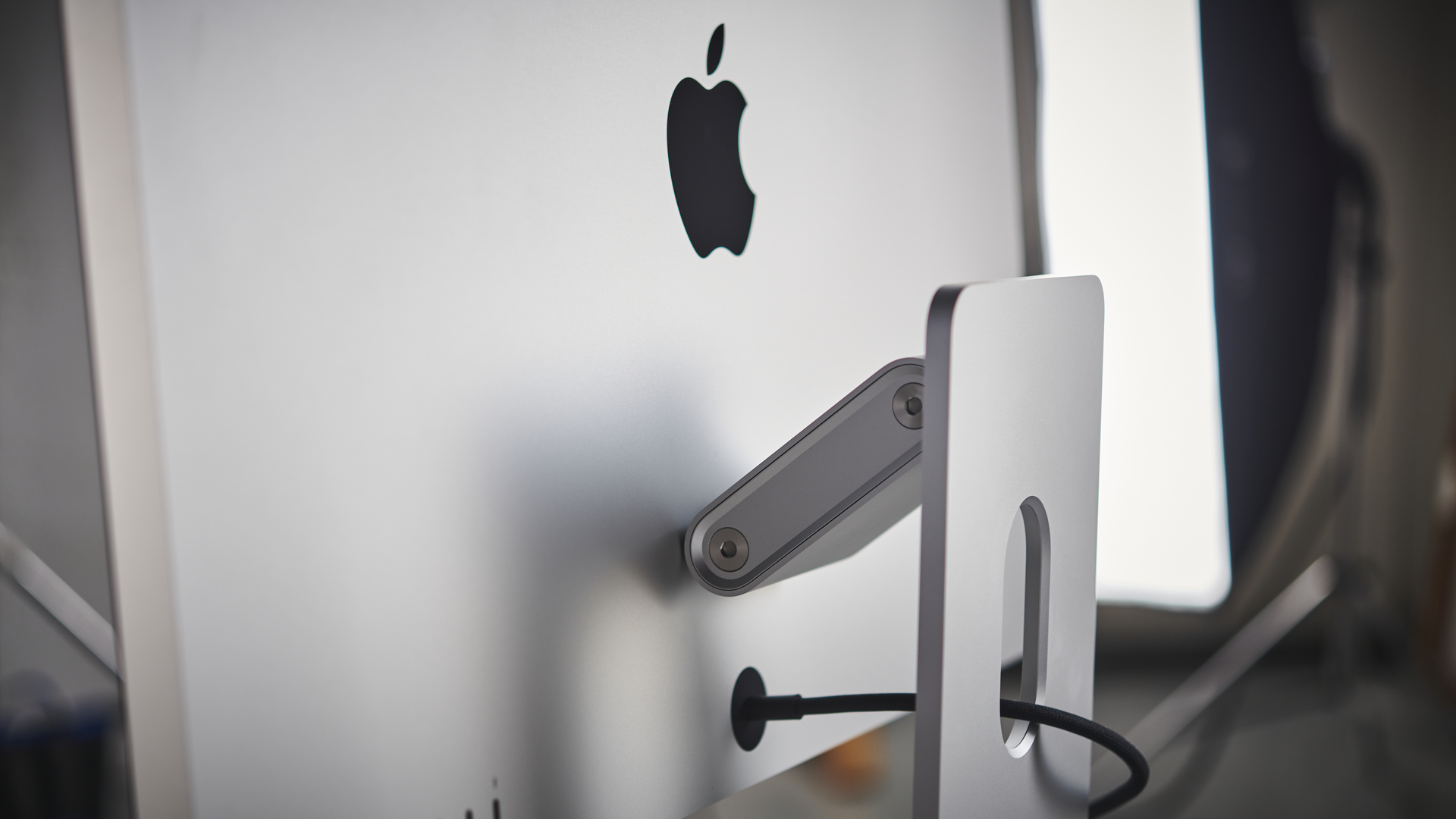
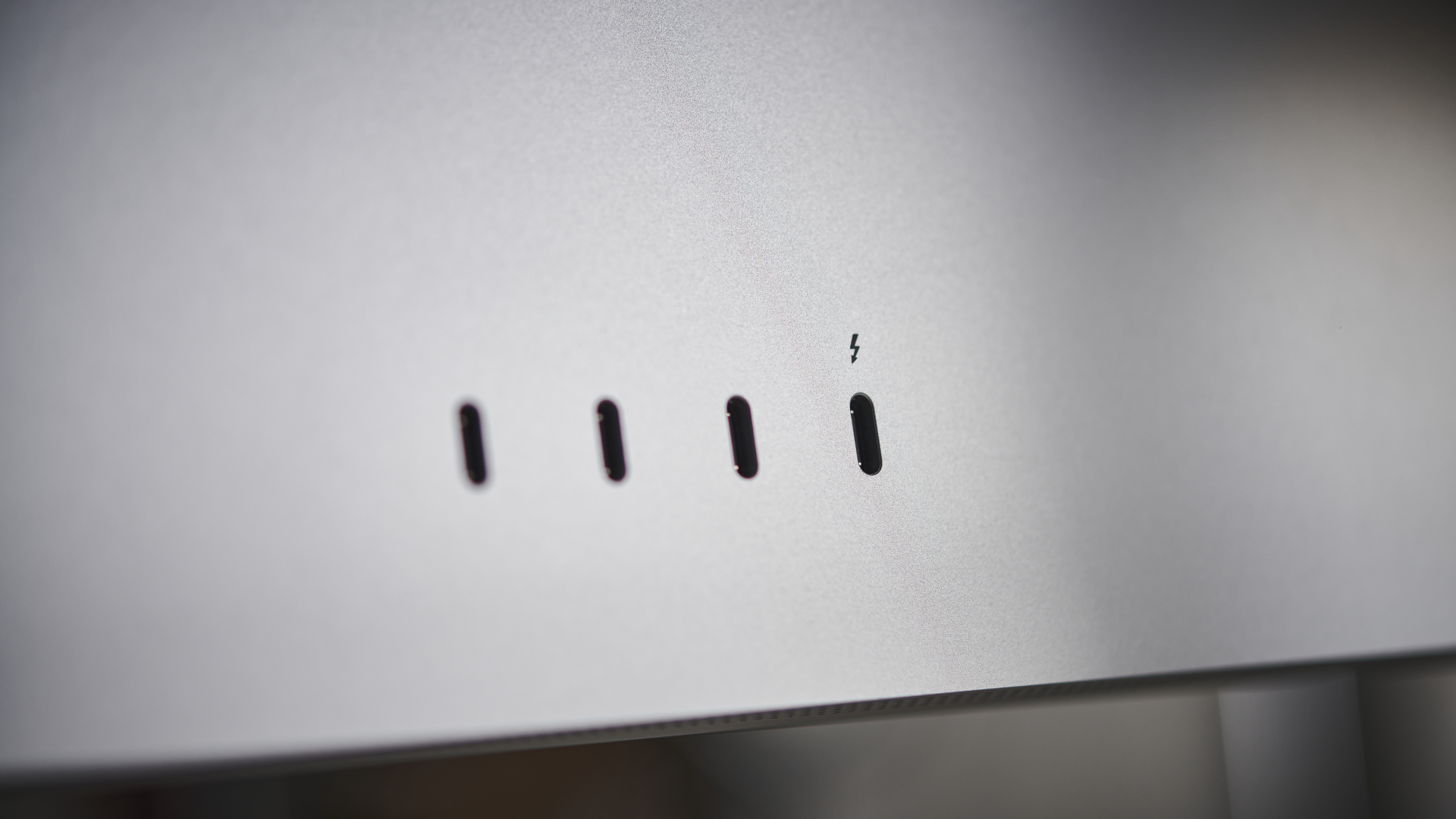
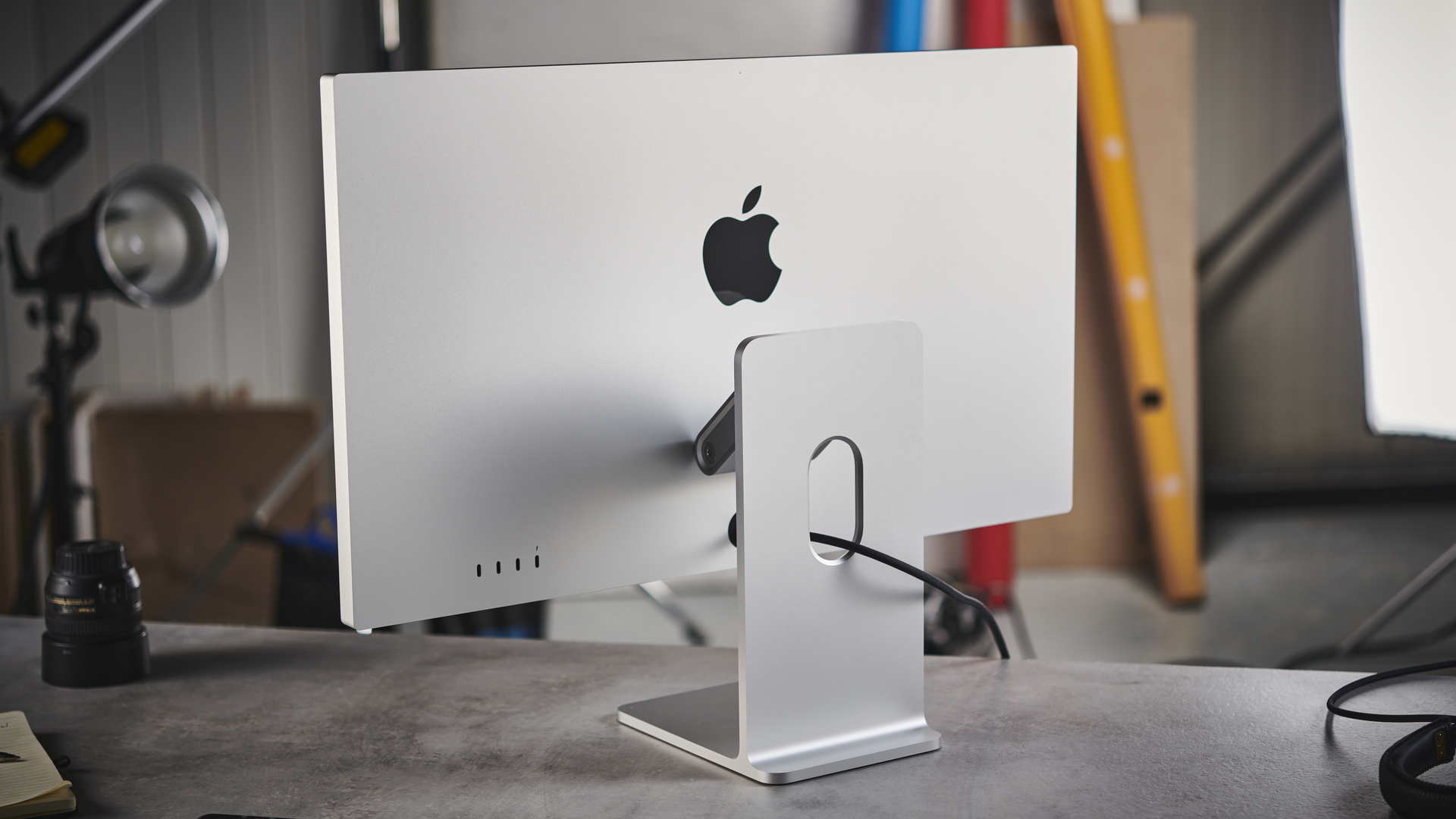

Specifications
Reasons to buy
Reasons to avoid
The Apple Studio Display is a monitor designed for creative professionals, specifically those with a Mac or MacBook Pro. It has a 27-inch 5K resolution display with a pixel density of 218 PPI and supports one billion colors, making it an excellent choice for photo and video editing tasks. It also features a P3 wide color gamut and 600 nits of brightness. The monitor has a sleek design and is available with a tilt-adjustable stand or a VESA mount adapter. However, the stand does not have height adjustability unless you pay an additional $400. The display is also compatible with Apple's True Tone technology, which adjusts the white balance to match ambient lighting conditions. However, this feature can be turned off for professionals who require high color accuracy. The screen is reflective, but upgrading to the nano-texture screen can minimize reflections.
The Apple Studio Display is expensive, and may not be suitable for those outside its target market of creative professionals. All that being said, this monitor is the perfect companion for those in the Apple Ecosystem. If you are looking for the best monitor for a Mac mini, Mac Studio, or even a Mac Pro, this might just be exactly what you are looking for. As is true with any product within the beautiful walled garden of Apple products, everything just works. The UI is uniform, certain features of the monitor, such as brightness, speakers control, and full control of the webcam can only be accessed from a Mac, and therefore, this monitor makes the most sense to use with a Mac.
It’s not all sunshine and rainbows though, we actually have found many members of our team who, while they love the Studio Display, are used to multi-inputs on their monitors, and therefore cannot get away with using this display at their workstation. The Studio Display has only a single input display, natively. You could use a switcher, a hub, or physically unplug the monitor from one Mac to another, like your Mac studio to your Macbook, or even your iPad (especially with iPadOS 17 and Stage Manager enabled). However, there is no internal ability to switch between inputs as is common on most modern monitors.
Read our full Apple Studio Display review
To ensure you're getting the best deal, browse our Apple promo codes for potential discounts.
Best 5K business monitor
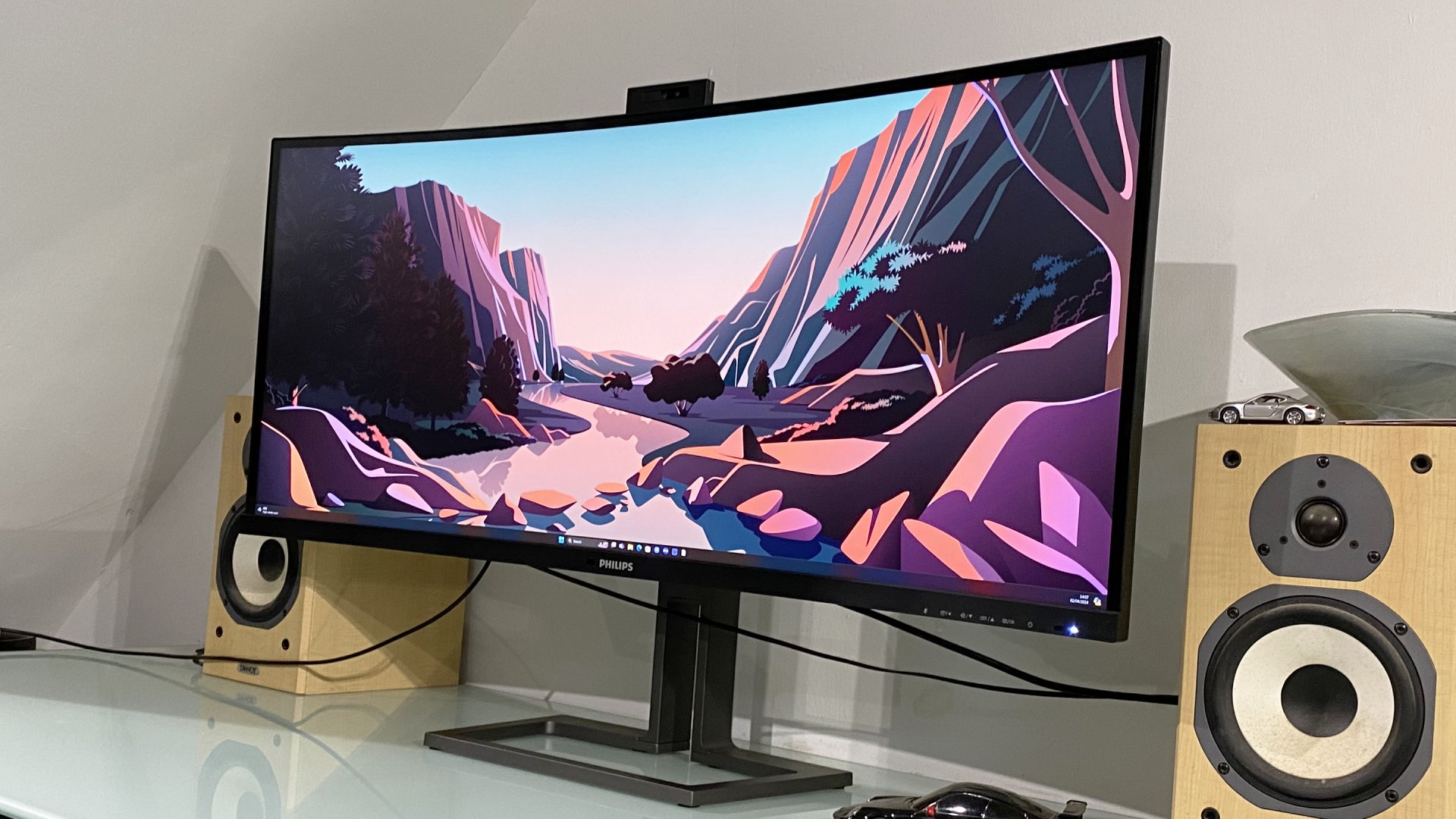
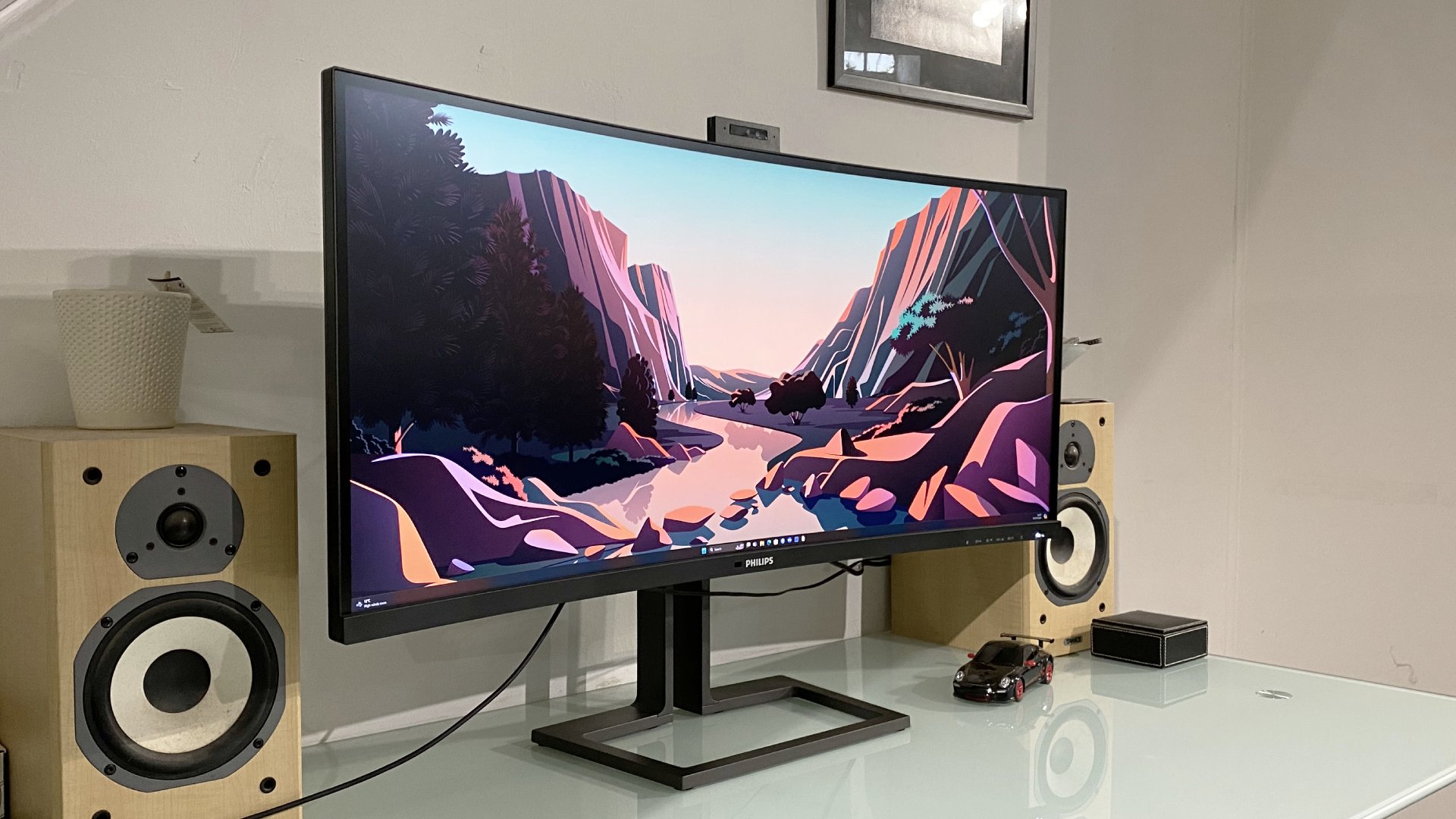
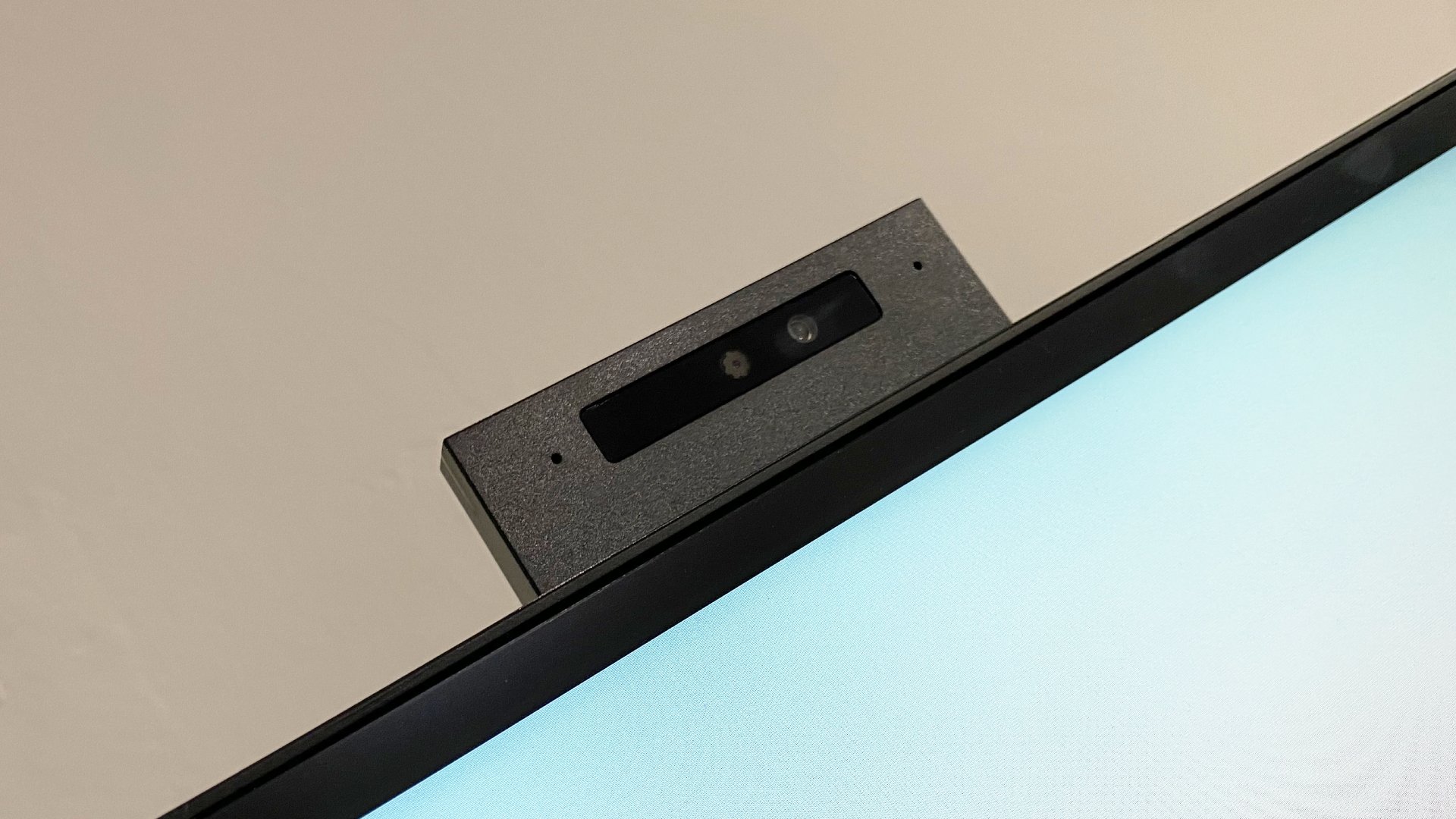
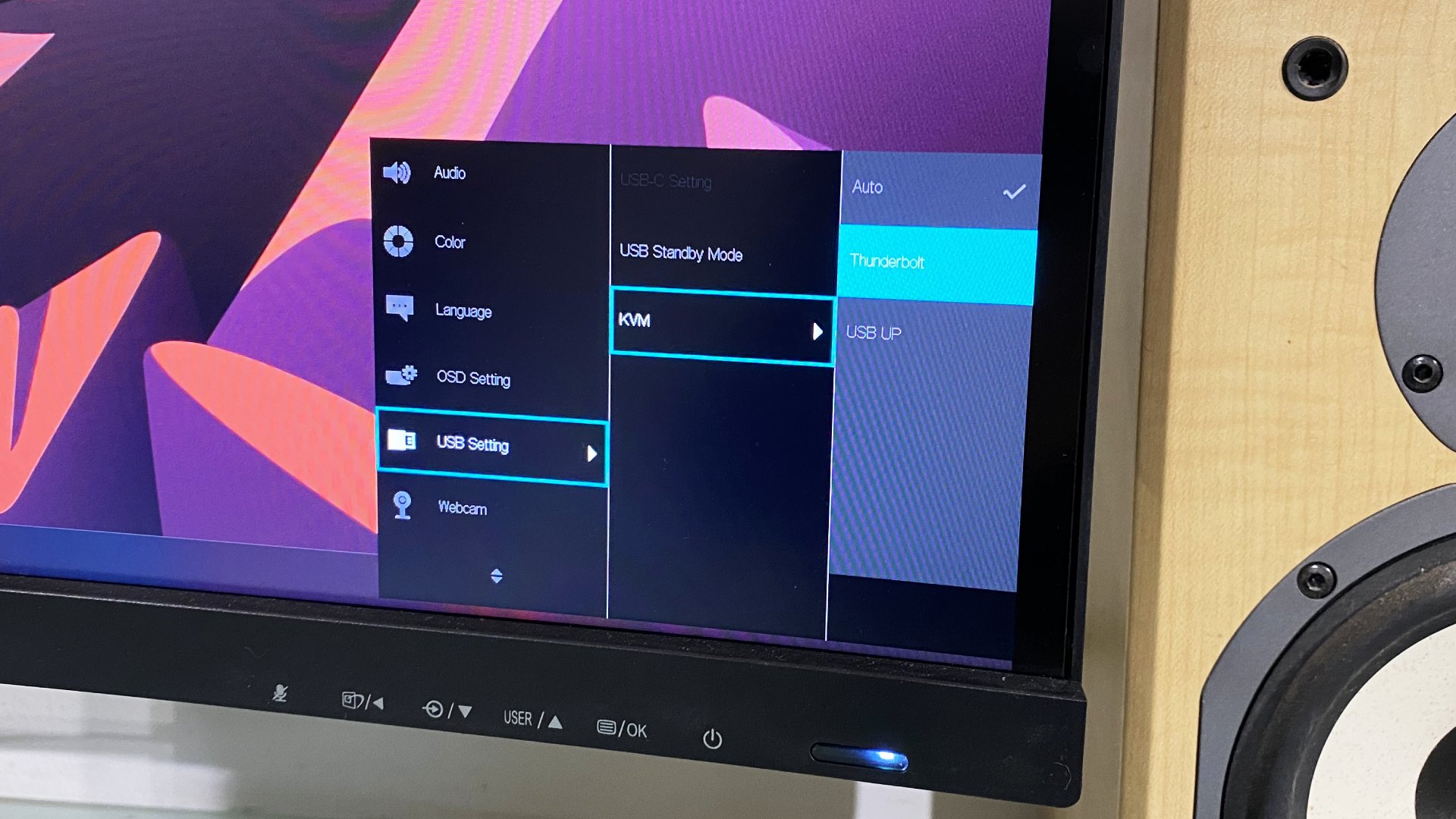
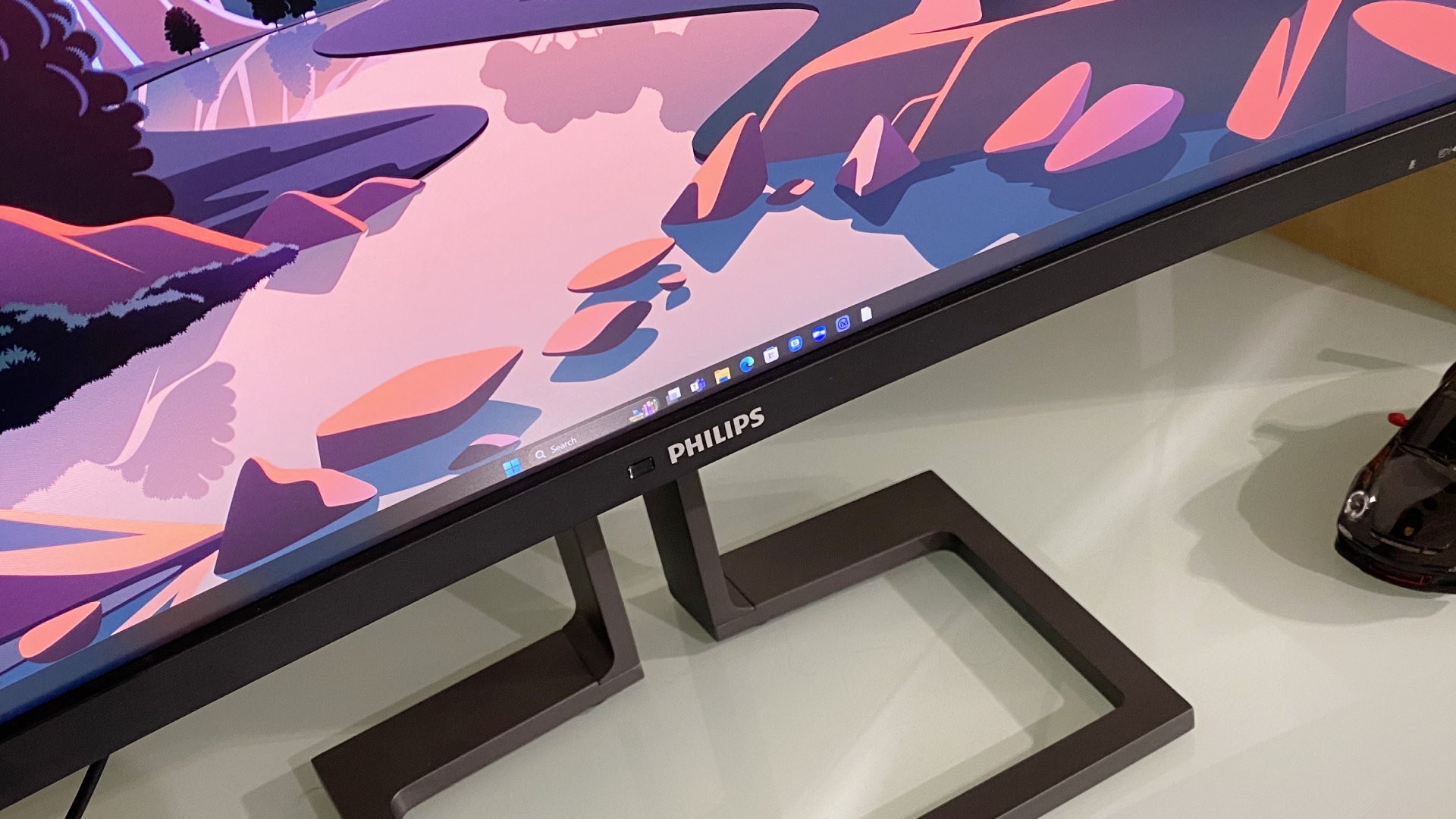
Specifications
Reasons to buy
Reasons to avoid
We were seriously impressed with the Philips 40B1U6903CH when we tested out this business monitor. Naturally, the 5K2K resolution is stunningly beautiful, clear, crisp - just as you'd expect. For us, this display delivered for all-purpose high-DPI computing on an epic scale.
Like many of the Dell UltraSharp monitors, this is a productivity panel. Designed for professionals, it's well-built if somewhat traditional, somewhat familiar in appearance, though no less thoughtful. The panel features a headphone hook to the left, a 5MP pop-up webcam with Windows Hello support. There is also a KVM switch and two Thunderbolt 4 / USB-C ports with power delivery up to 90W connecting a laptop and daisy-chaining multiple monitors.
Having said that, our tests showed relatively low-fidelity in its image quality, coupled with limited HDR support. That may be a deal-breaker for some. For general use, however, this shouldn't prove an issue. Using the Philips 40B1U6903CH is a freeing experience, we found, with excellent connectivity.
Read our full Philips 40B1U6903CH review
Best 5K ultrawide monitor
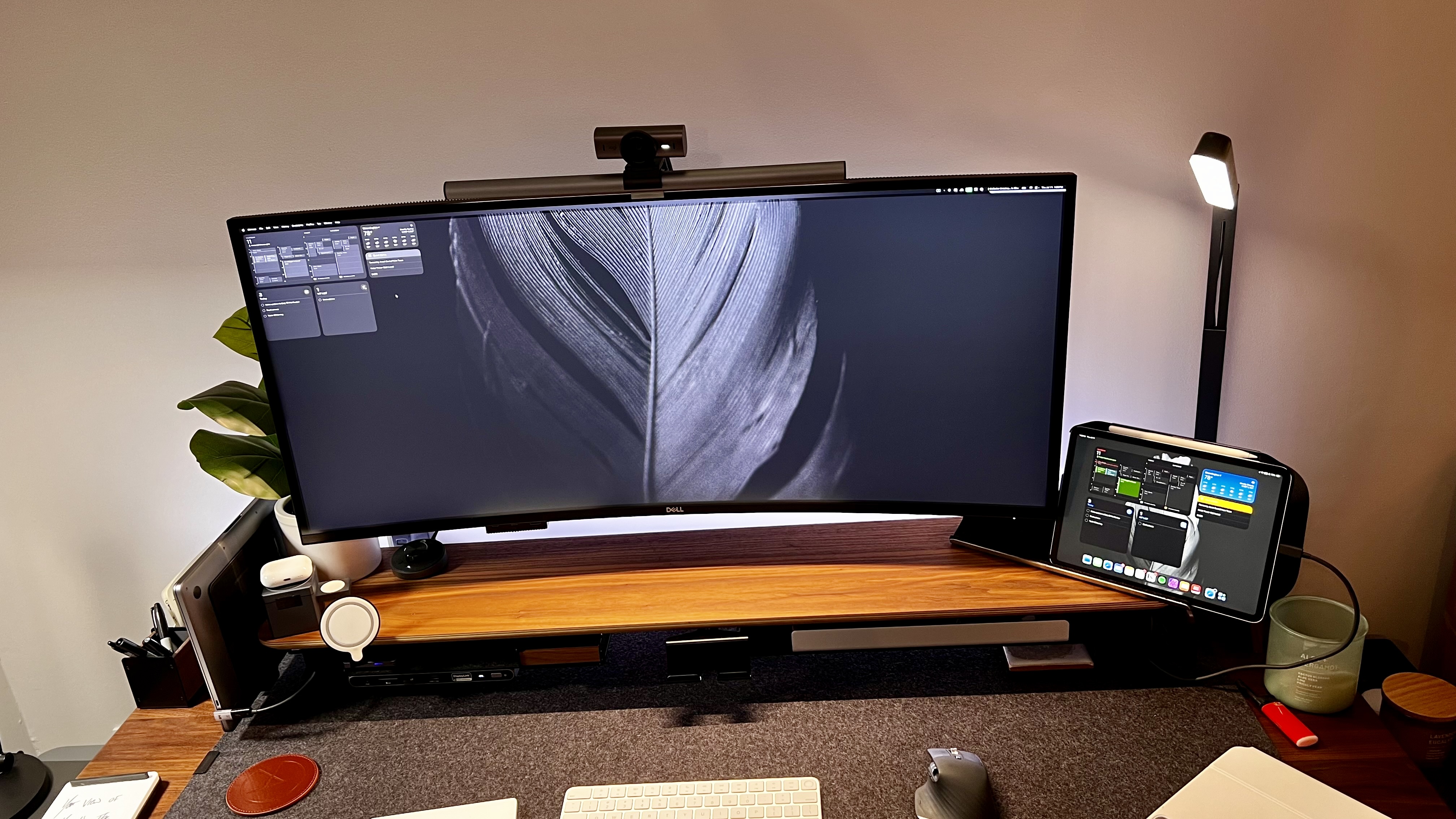
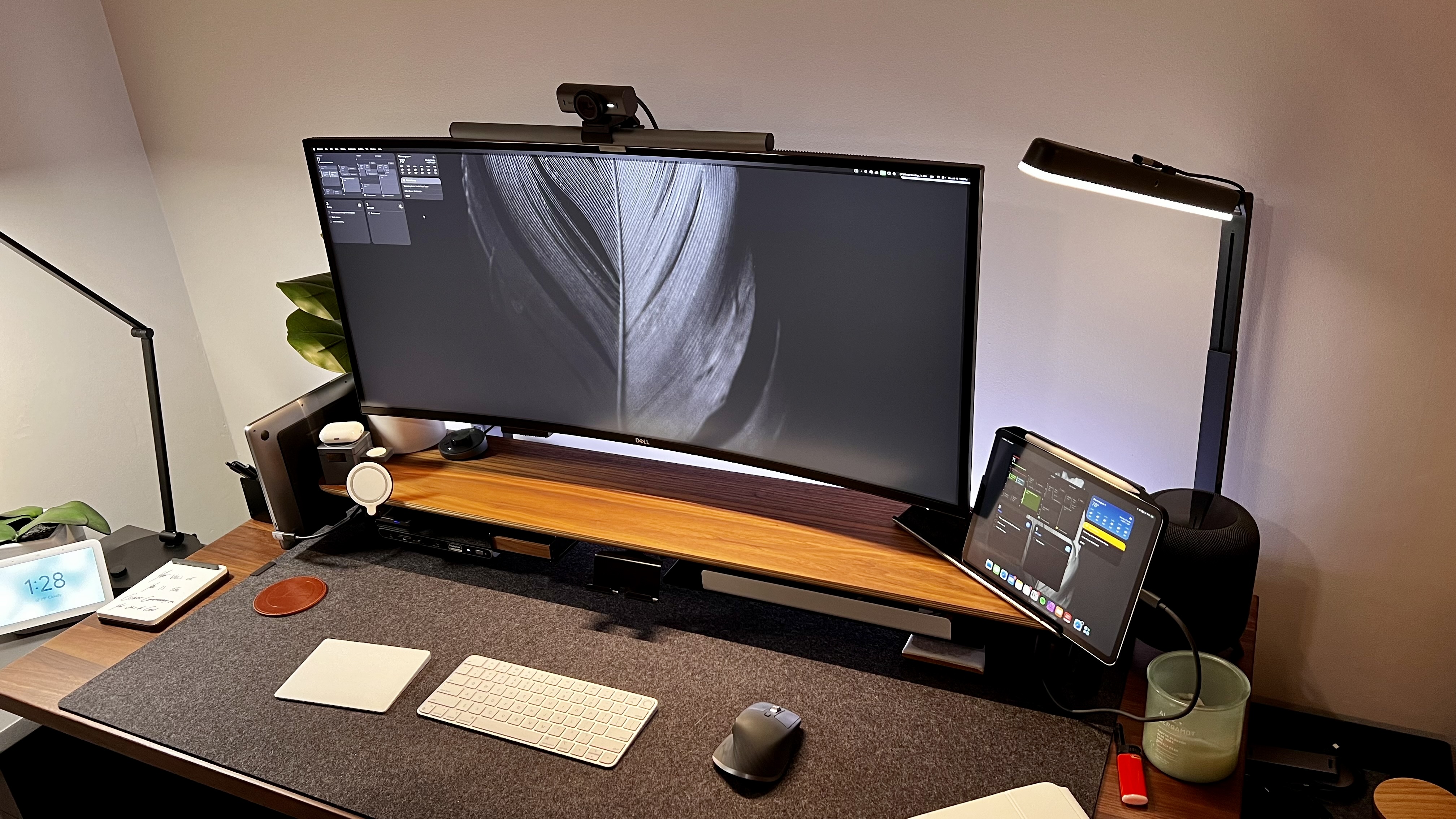
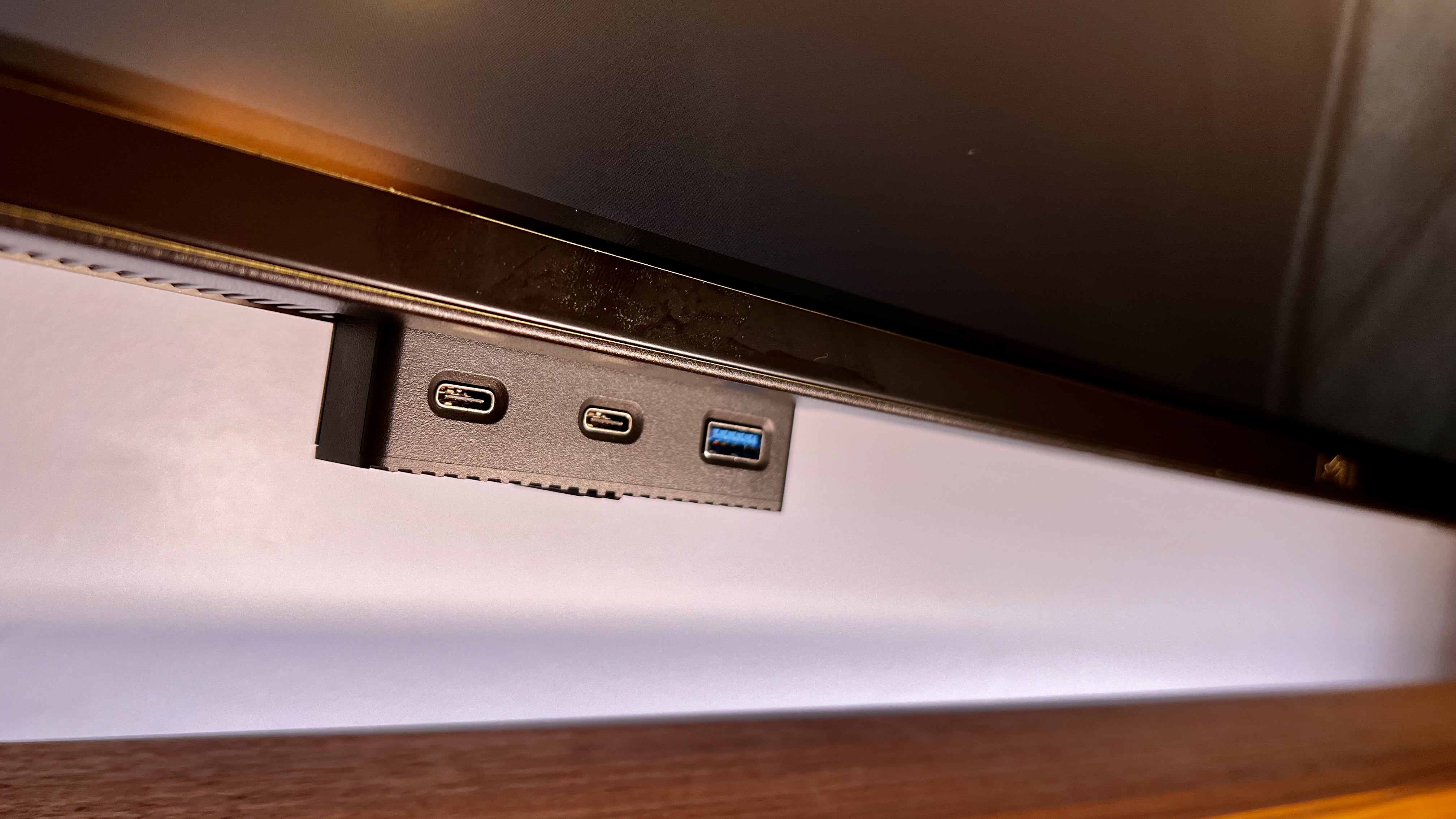
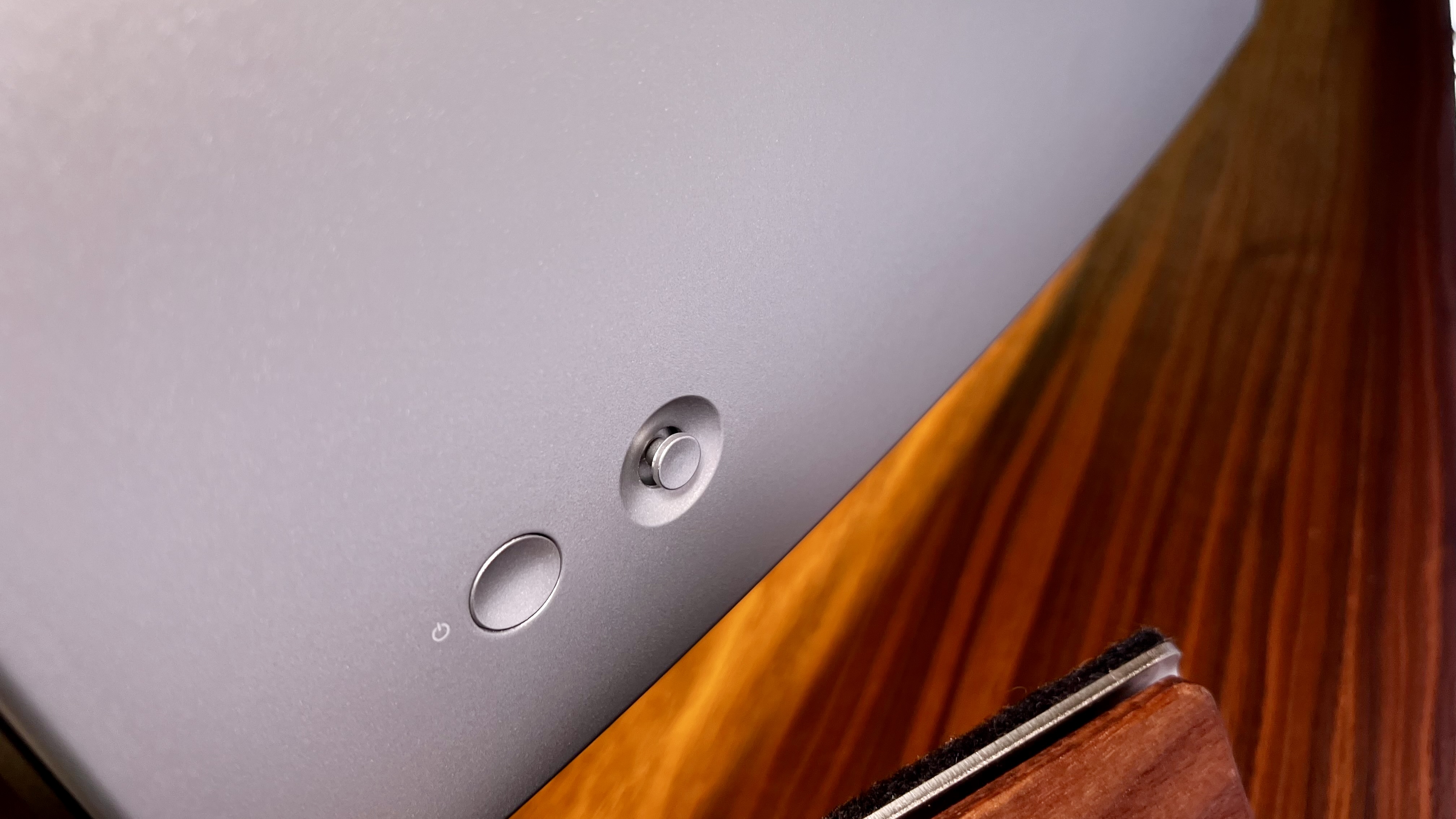
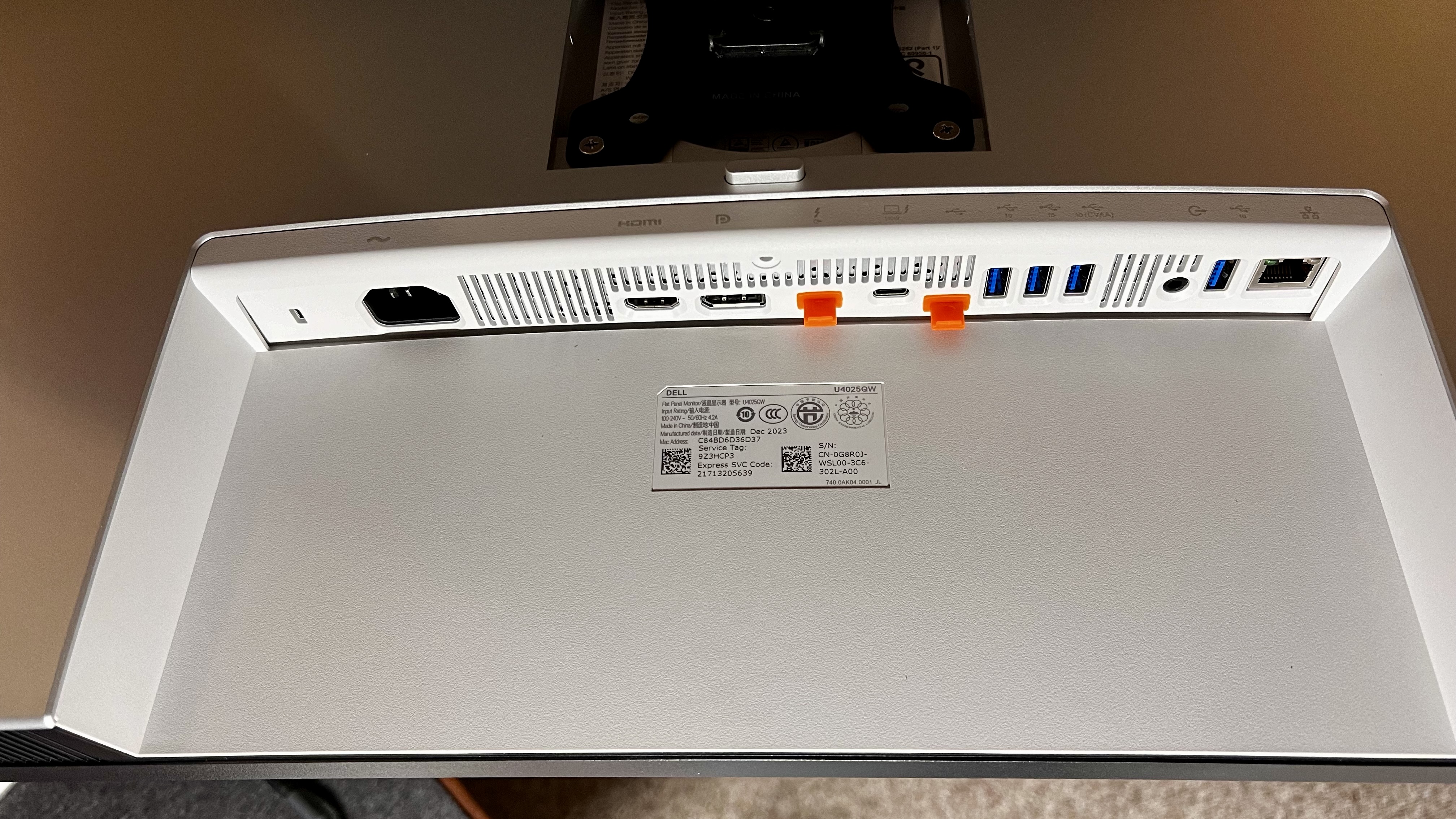
Specifications
Reasons to buy
Reasons to avoid
It might be expensive, but the Dell UltraSharp U4025QW is an incredible productivity panel that spans 40-inches in glorious 5K2K resolution. Design language follows the usual, unmistakeable Dell style - although we like the addition of a small, pop-out hub along the bottom of the screen, allowing easy access to a USB-A and two USB-C ports. Smart thinking.
During our testing, this 5K monitor excelled at productivity tasks, with more than enough screen space to handle multiple windows, tabs, apps, and the like, while the 120Hz refresh kept everything smooth and seamless. However, it is expensive, it is larger than standard displays, and to really get the most out of a 5K monitor like this, you'll need a powerful graphics card to drive it - we even noticed some slowdown when connected to an M2 MacBook Pro running too much.
Like most displays from Dell, there's a clear business focus here. Boasting great color accuracy, too, this is an ideal companion device for content creators, designers, and photographers.
Save on high-performance laptops and accessories with our latest Dell discounts. Find great deals on tech for work and play.
Read our full Dell UltraSharp U4025QW review
Best 5K monitor for gaming
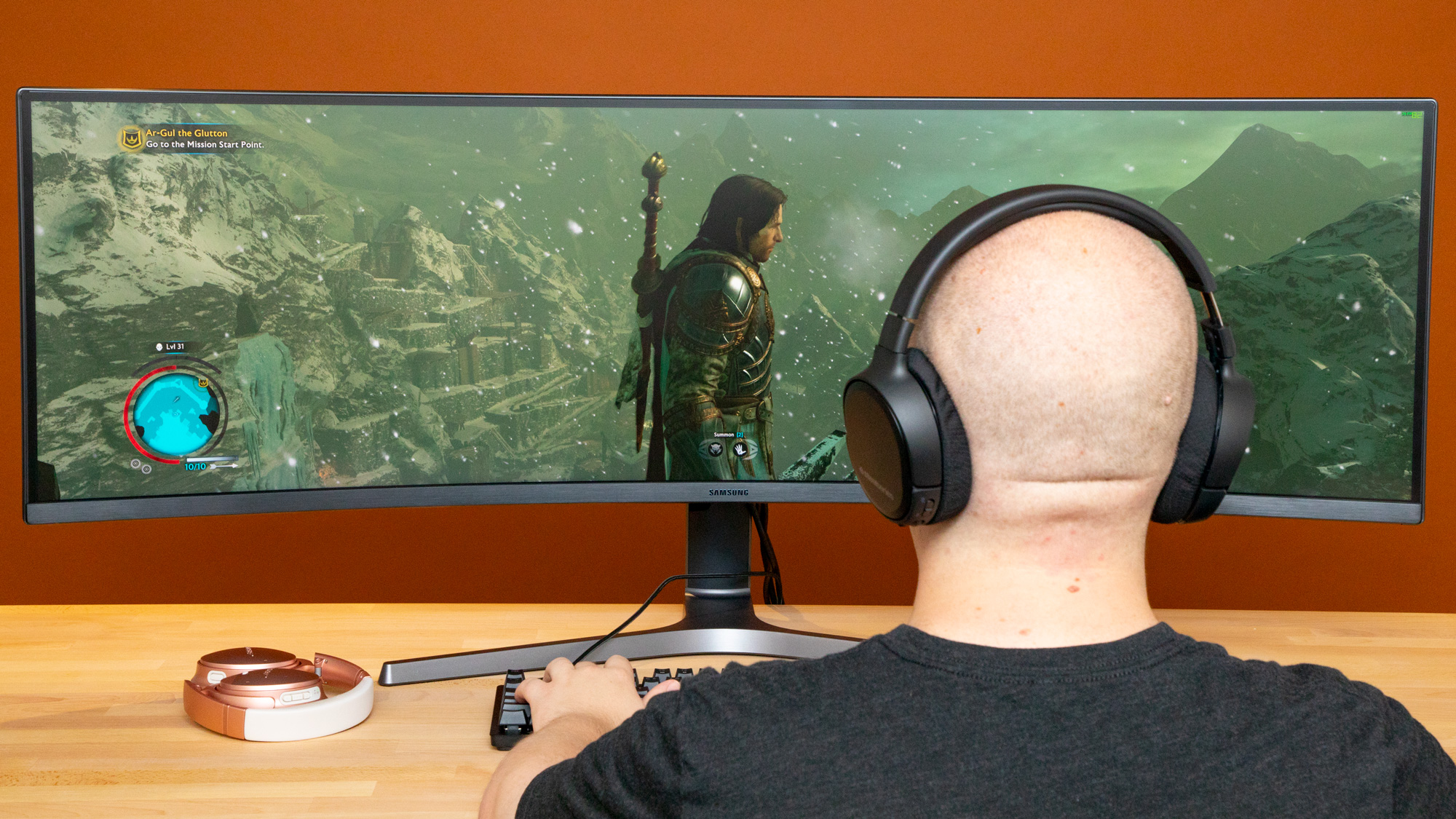
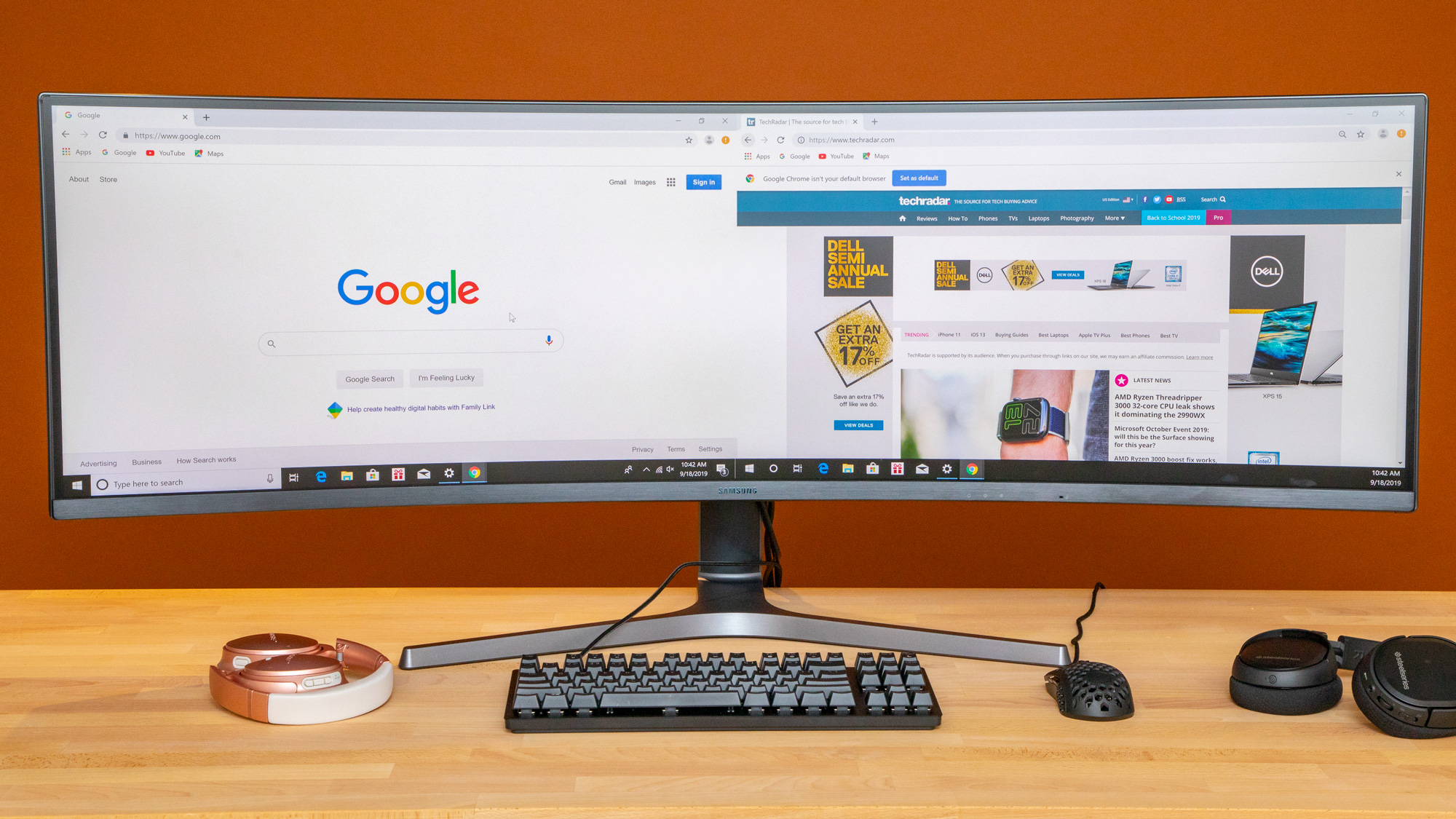
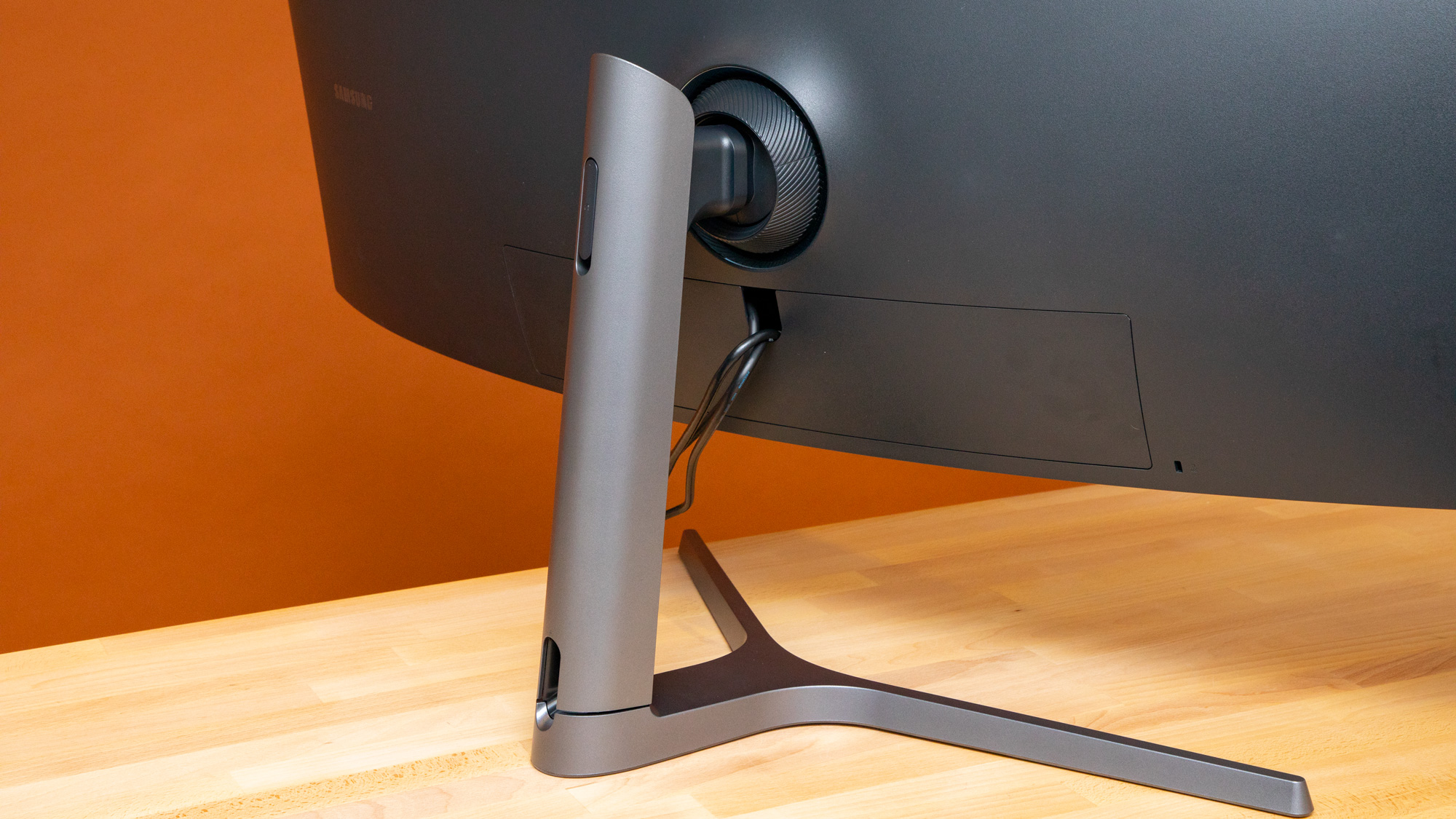
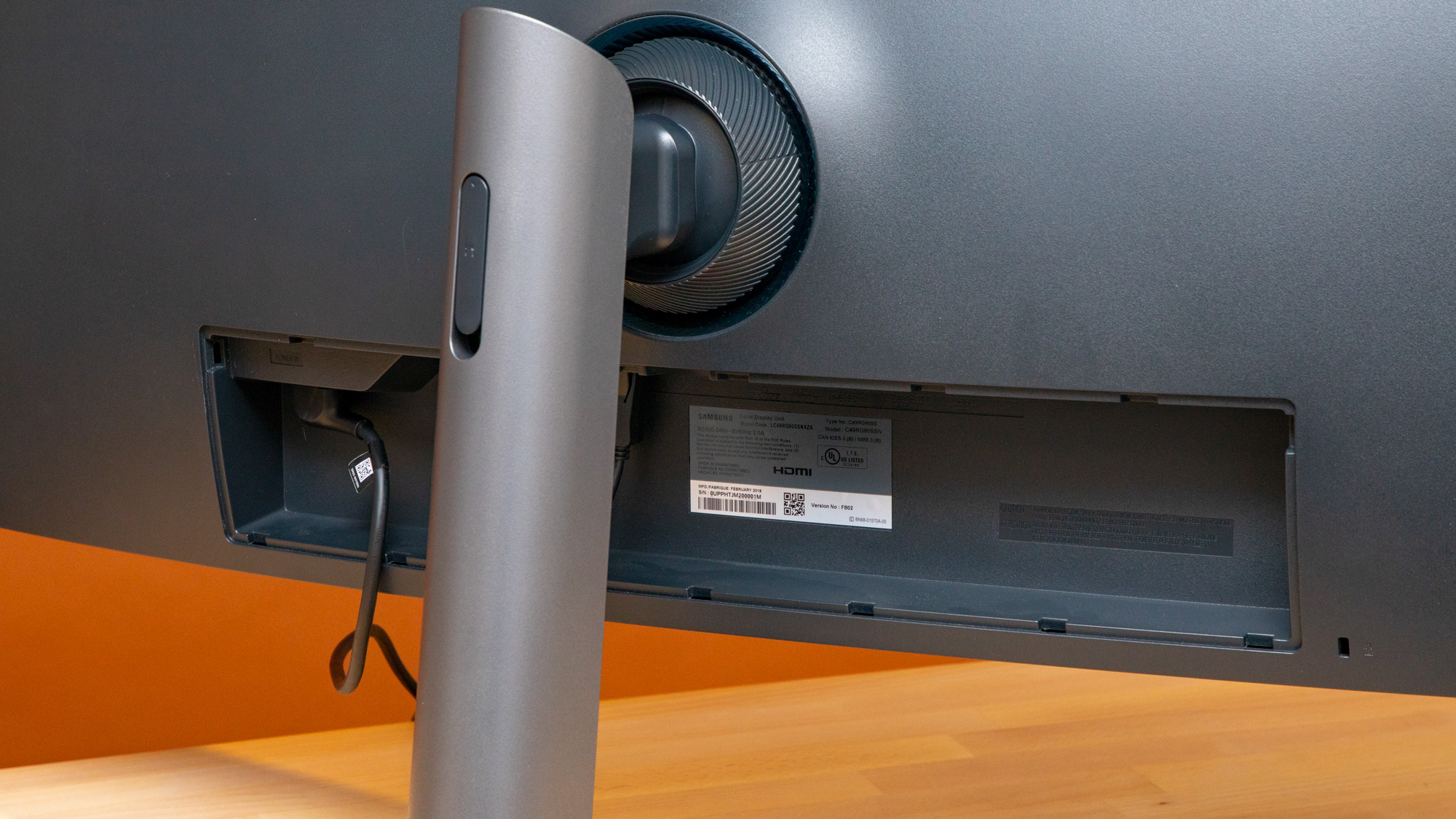
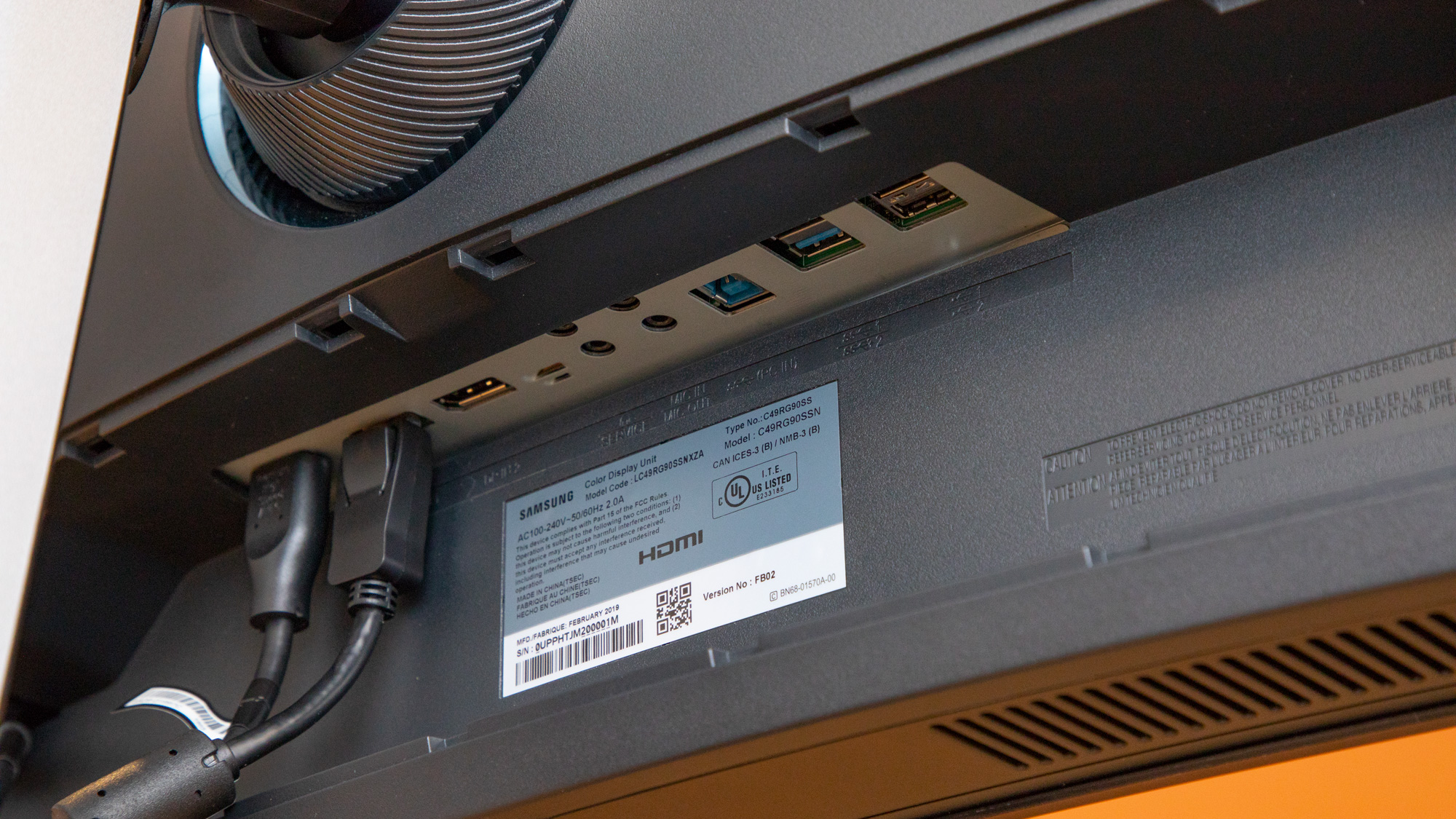
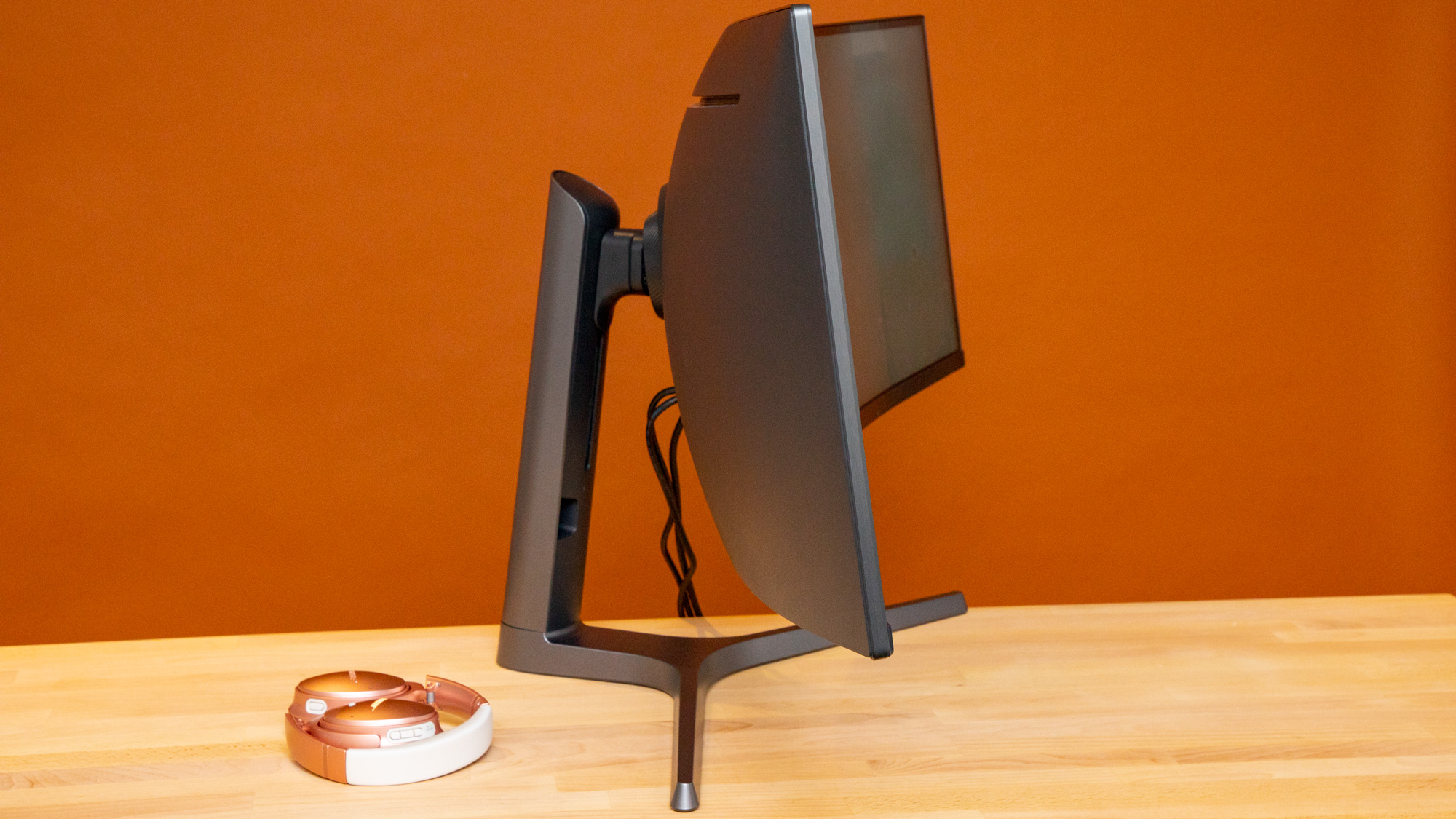
Specifications
Reasons to buy
Reasons to avoid
Professionals can be gamers too, which is why the CRG9 may be an enticing option. Its 5K display, flaunting Quantum Dot (QLED) tech and 1.07 billion colors, is gorgeous - and the monitor also sports VESA DisplayHDR 1000 tech backed up by 1,000 nits of pure room-illuminating brightness. For gamers, adding adaptive-sync tech will smoothen out frame rates up to the panel's 144Hz refresh rate. You'll need a beefy GPU to maximize this enticing ultrawide. Oh, and deep pockets will be required - this is one expensive monitor.
But, if you can get past the gasp-inducing price tag, this beast is remarkably good. Because it is such a good gaming monitor and still a fantastic business monitor, you can switch between a legitimate gaming setup and spreadsheets without so much moving. Granted, not everyone has the space for a 49-inch monitor – this thing is gargantuan – but if you do, its 32:9 aspect ratio with 5120 x 1440 resolution might just be the best beast you can buy.
Read our full Samsung CRG9 review
Best 5K monitor for creatives

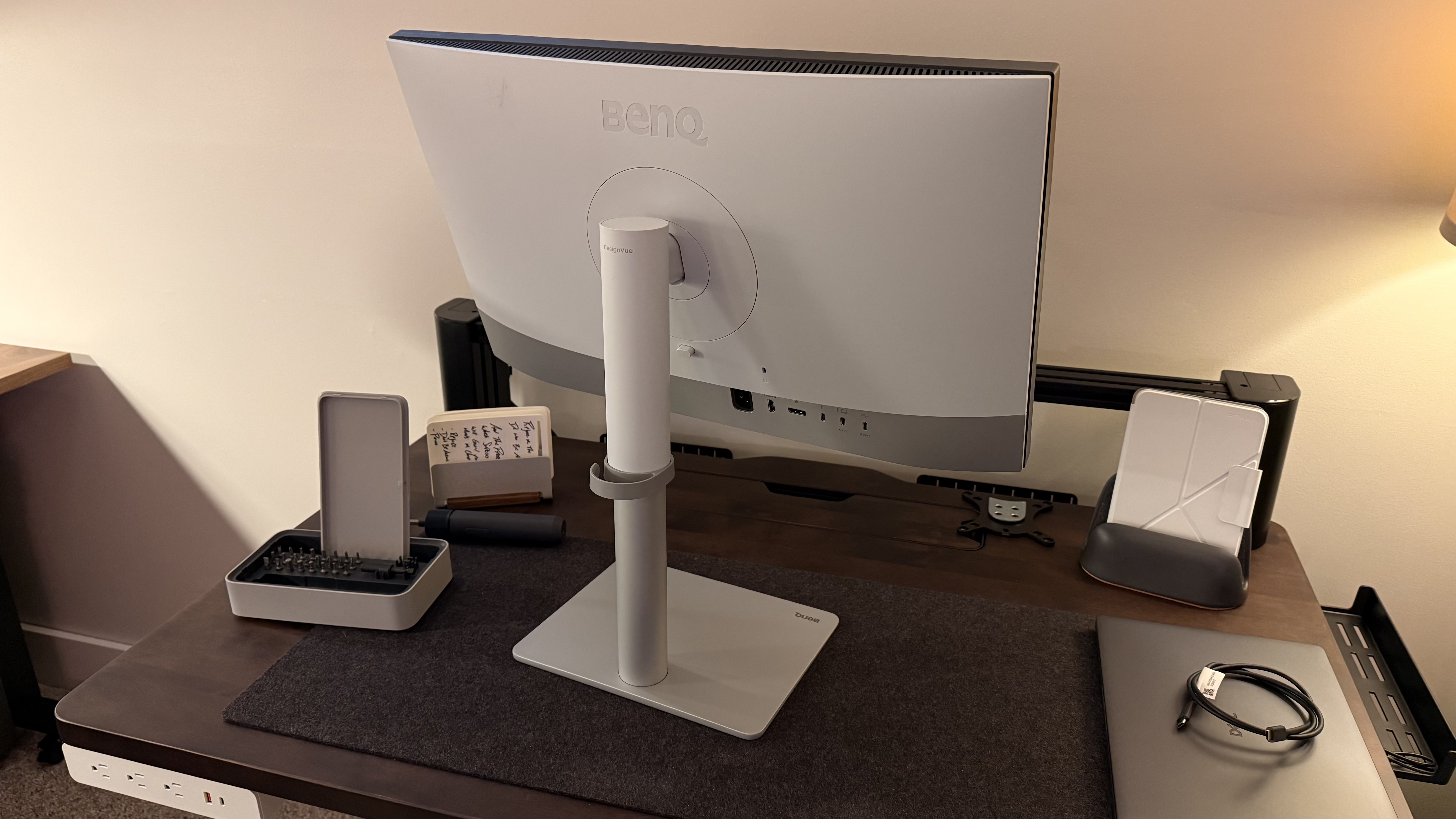
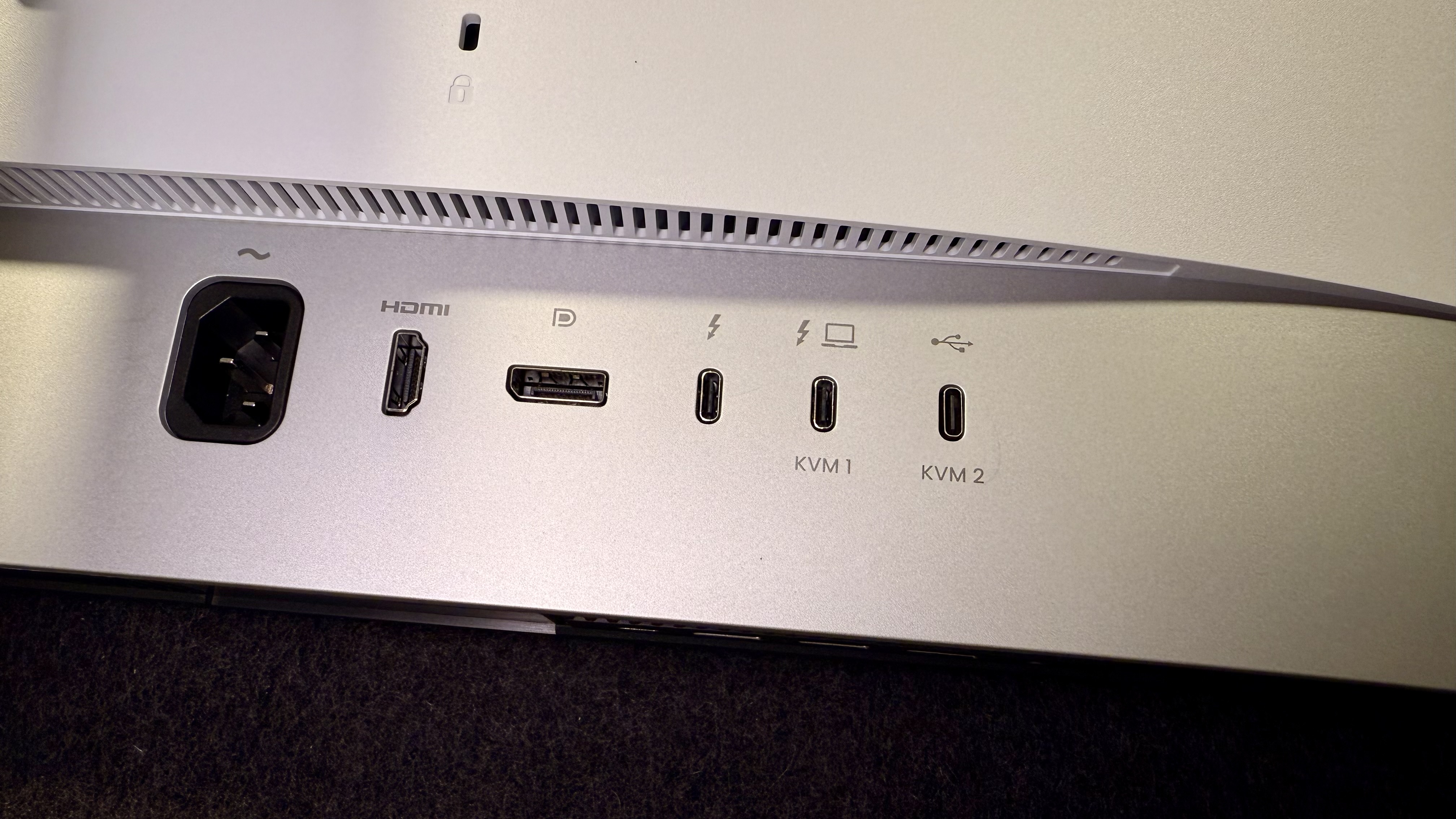
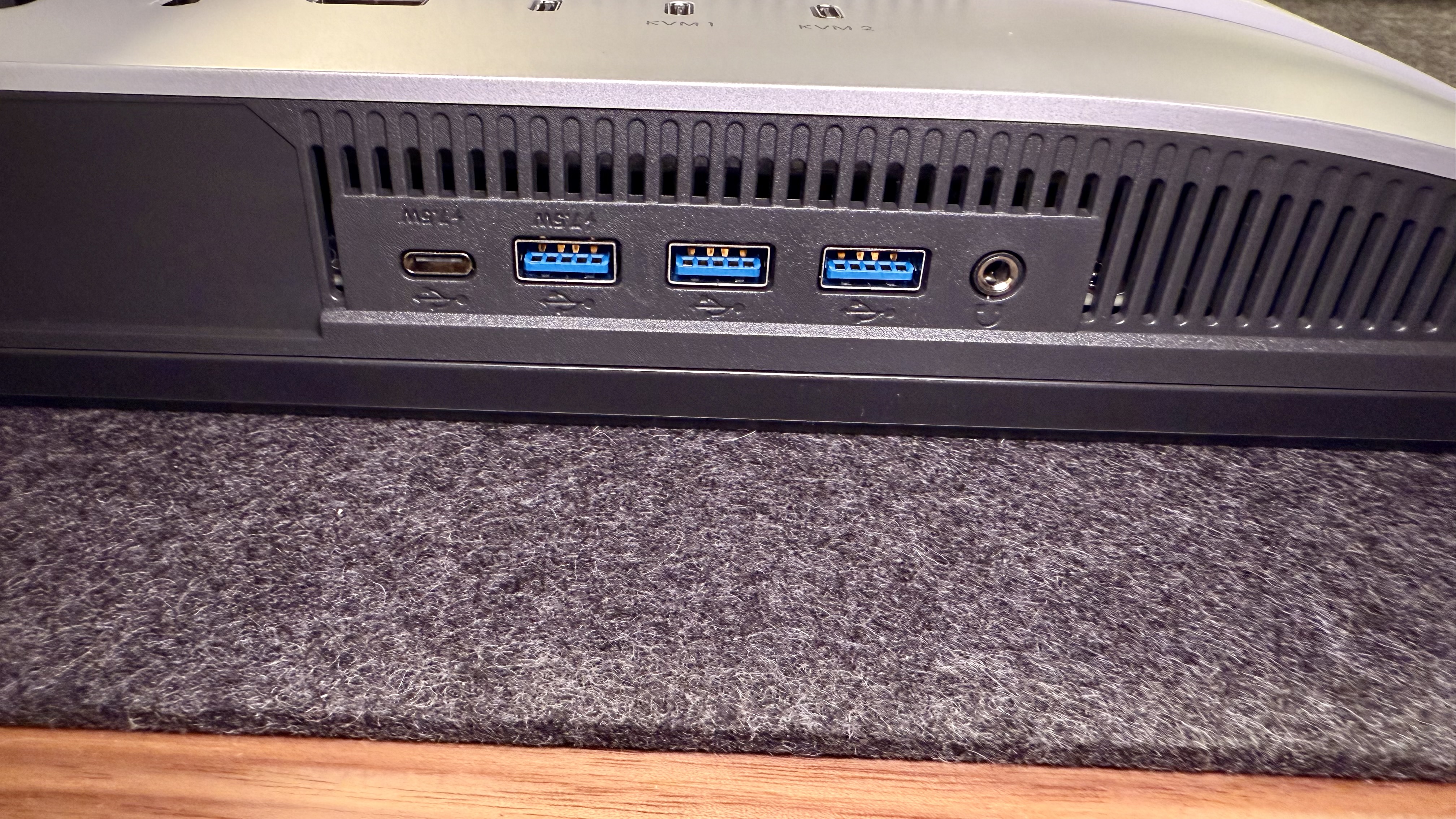
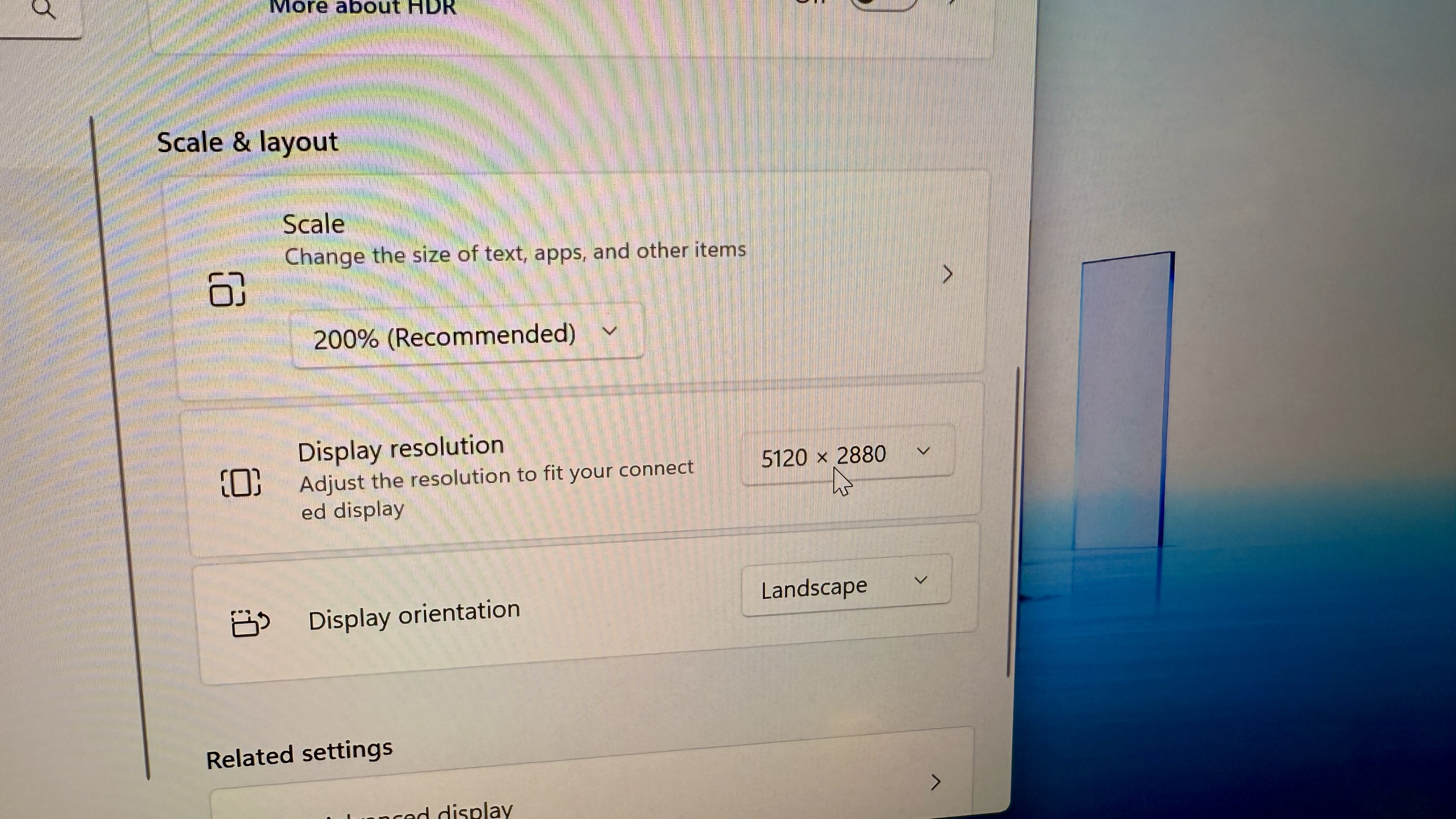
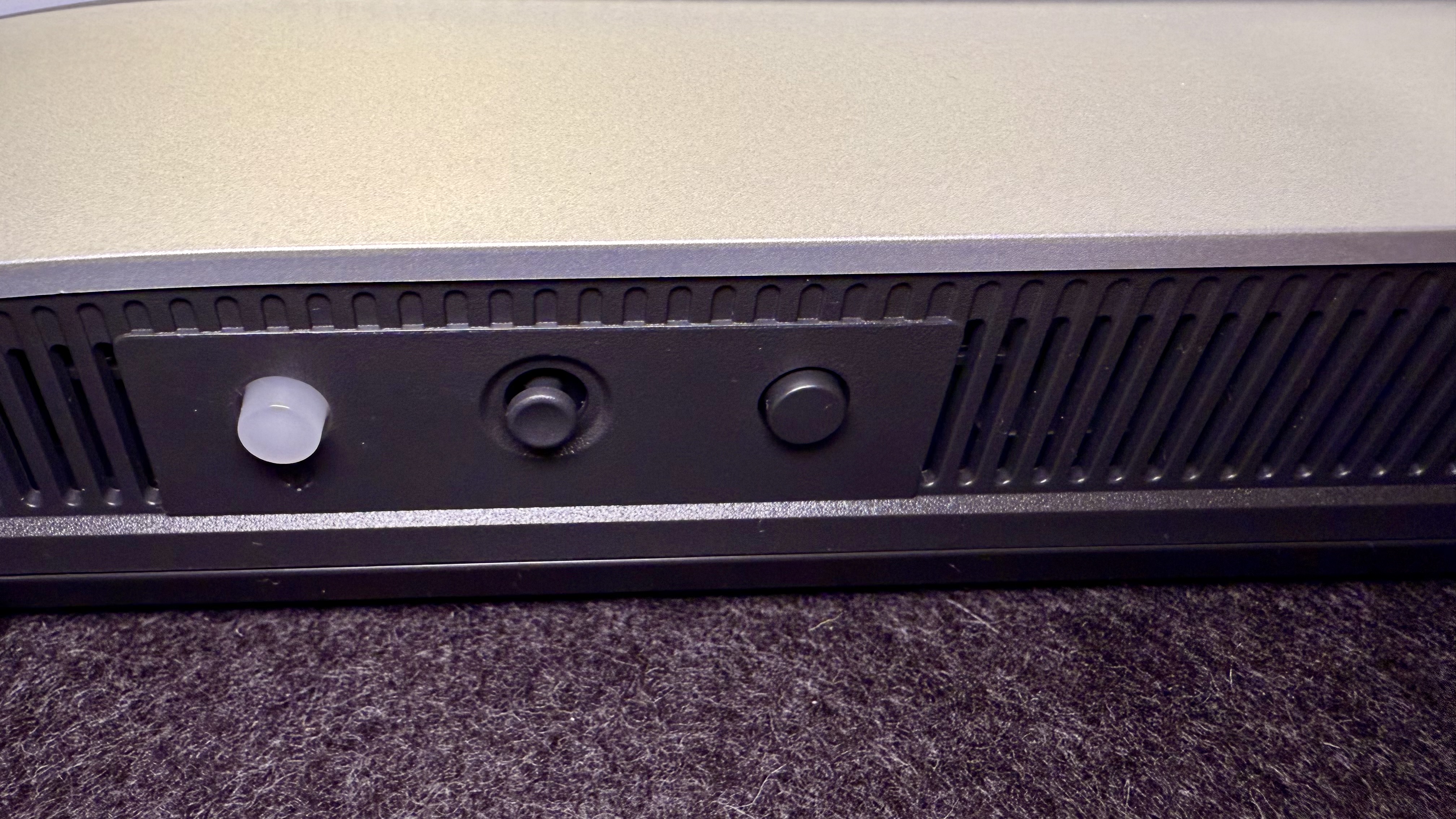
Specifications
Reasons to buy
Reasons to avoid
The BenQ PD2730S is a 5K monitor specifically designed for creative professionals, turning the head of our reviewer, Collin, who found it an excellent alternative to the Apple Studio Display - especially since it includes more input and output options, includi9ng Thunderbolt 4.
This 27in 5K monitor has an IPS panel with Nano Matte coating, which limits on-screen reflections. Design-wise, the display is construction from a premium-feeling plastic that keeps it lightweight and pretty easy to move around. Saying that, it's not quite as premium as some monitors, and we wouldn't have minded a little extra weight to the unit. The bezels around the panel are slim, too. Around the back there's a VESA mount, while the coupled stand gave us no problems when it came to adjusting height, tilt, and swivel. It also comes with the HotKey puck, a wireless controller for changing settings on the fly.
Performance proved very good, scaling well across our PC and Mac tests (unlike some 5K monitors we've tried). As you'd expect from a 5K monitor for creatives, color accuracy is particularly good, hitting 98% P3 and 100% sRGB. However, the 400 nits brightness is about average - if you're using this in the home office, you shouldn't run into any issues at all (we certainly didn't during review) but it might struggle in direct sunlight.
Read our full BenQ PD2730S review
Best 5K and 8K monitors: Frequently asked questions
What is a 5K and 8K monitor?
5K and 8K relate to the highest resolution the monitor is capable of displaying.
5K monitors refer to monitors with a 5120x2880 resolution, while 8K monitors refers to monitors with a 7680x4320 resolution.
Is it worth getting a 5K or 8K monitor?
Most people don't really need the best 5K or 8K monitors, which are very expensive and rarely supported via mainstream streaming sites and video games. So, you won't see any advantage.
However, if you work in the photo or video world and are working with 5K or 8K video or photo files, then a 5K or 8K monitor is essential. In our experience, the image quality at these resolutions is absolutely remarkable.
Is 5K or 8K better than a 4K monitor?
Yes - if you're purely focused on resolution. The best 5K and 8K monitors crisply display details that 4K monitors can't match, since these monitors use 4840 x 2160 pixels.
But while 5K and 8K monitors have better image quality they are also significantly more expensive in most cases, and with less support for higher resolutions, they're not always necessary for most everyday monitor needs. It can also take longer to stream files at the higher 5K and 8K resolutions.
What are the benefits of a 5K or 8K display?
The main benefits of a 5K or 8K display are the increased picture quality, higher resolution, and sharper visual experience. However, those visuals differences aren't always clear to the naked eye.
How to choose the best 5K and 8K monitors for you
When choosing which 5K or 8K monitor is best for you, there are several key factors at play. Like any of the best monitors, size isn't everything. Like 4K before it, the best 5K and 8K monitors are another big jump in quality, price, and requirements.
Right now, 5K and 8K monitors are a serious investment. For most users, a 4K monitor will be enough. Even if you're a creator looking for the best monitor for photo editing or the best video editing monitor, a 4096 × 2160 resolution is enough for most regular creative tasks. Generally, those who need a 5k or 8k monitor are professionals in design, photography, and videography, where detail and color accuracy are critical.
For 5K monitors (5120 × 2880 pixels), you can choose regular 16:9 aspect ratio or ultrawide monitors with 21:9 (or above) aspect ratios. The best ultrawide monitors are a great choice for a multi-monitor experience with a single screen.
Monitors with a regular aspect ratio are generally better for design work as high-DPI modes in Windows and macOS allow for working in scaled resolutions, which lets users zoom in to manipulate images in incredible detail while rendering pin-sharp text and UI elements. However, ultra-wide monitors present an intriguing alternative that ignores pixel scaling to give professionals acres of screen space for positioning windows, stretching out video-editing timelines, and watching cinematic videos as intended.
Your choice of 8K monitors (7680 × 4320 pixels), is limited, as currently, there aren't many 'affordable' 8K screens beyond the Dell UltraSharp UP3218K. It's an excellent screen in its own right, but we'd like to start seeing this market in particular flourish. There is nothing quite as sharp as 8K. In our experience, the best 8K monitors are significantly more demanding; therefore, most devices cannot output, so it’s essential to ensure that your computer can push to 8K if you are interested. Because of this, 5K is supported by far more devices than 8K. If you're integrating higher resolution displays into your workflow, make sure the output is compatible.
How we test the best 5K and 8K monitors
Our team of expert reviewers have hand-tested hundreds of screens, from the best monitors for the Mac mini to the best monitors for graphic design. So, we know what to look out for and what to avoid when it comes to high-performance, high-resolution displays.
Whether we're comparing refresh rates on the best MacBook Pro monitors or analyzing luminance of the best curved monitors, we take the same rigorous approach to all our screen tests.
In testing out the best 5K and 8K monitors, we use the monitor for daily use, paying close attention to inteded use, for example, playing triple-A games at max settings on the best gaming monitors, editing images with photography monitors, and so on. We push the monitor to the limits in terms of testing color accuracy, brightness, response times, and refresh rates.
Equally important to confirming specifications, our team will confirm how the monitor functions in day to day use. This will be done by utilizing the monitor for the tester’s workload for an extended period of time so they can get comfortable with the nuances of each monitor (eye strain, productivity, stands, and curvature, to name a few) and things like connectivity and even power consumption.
For on-the-go displays, we reviewed the best portable monitors.
Are you a pro? Subscribe to our newsletter
Sign up to the TechRadar Pro newsletter to get all the top news, opinion, features and guidance your business needs to succeed!

Steve is B2B Editor for Creative & Hardware at TechRadar Pro. He began in tech journalism reviewing photo editors and video editing software at Web User magazine, and covered technology news, features, and how-to guides. Today, he and his team of expert reviewers test out a range of creative software, hardware, and office furniture. Once upon a time, he wrote TV commercials and movie trailers. Relentless champion of the Oxford comma.